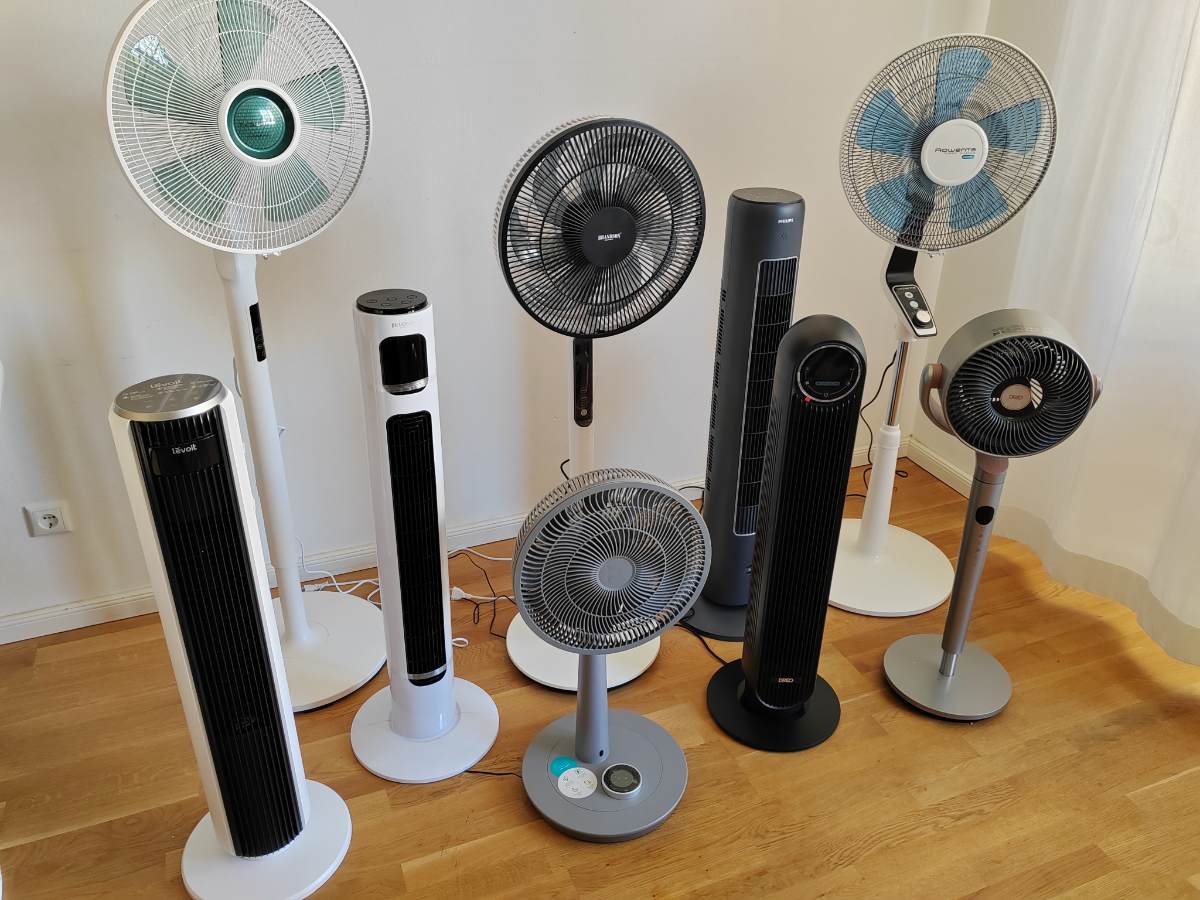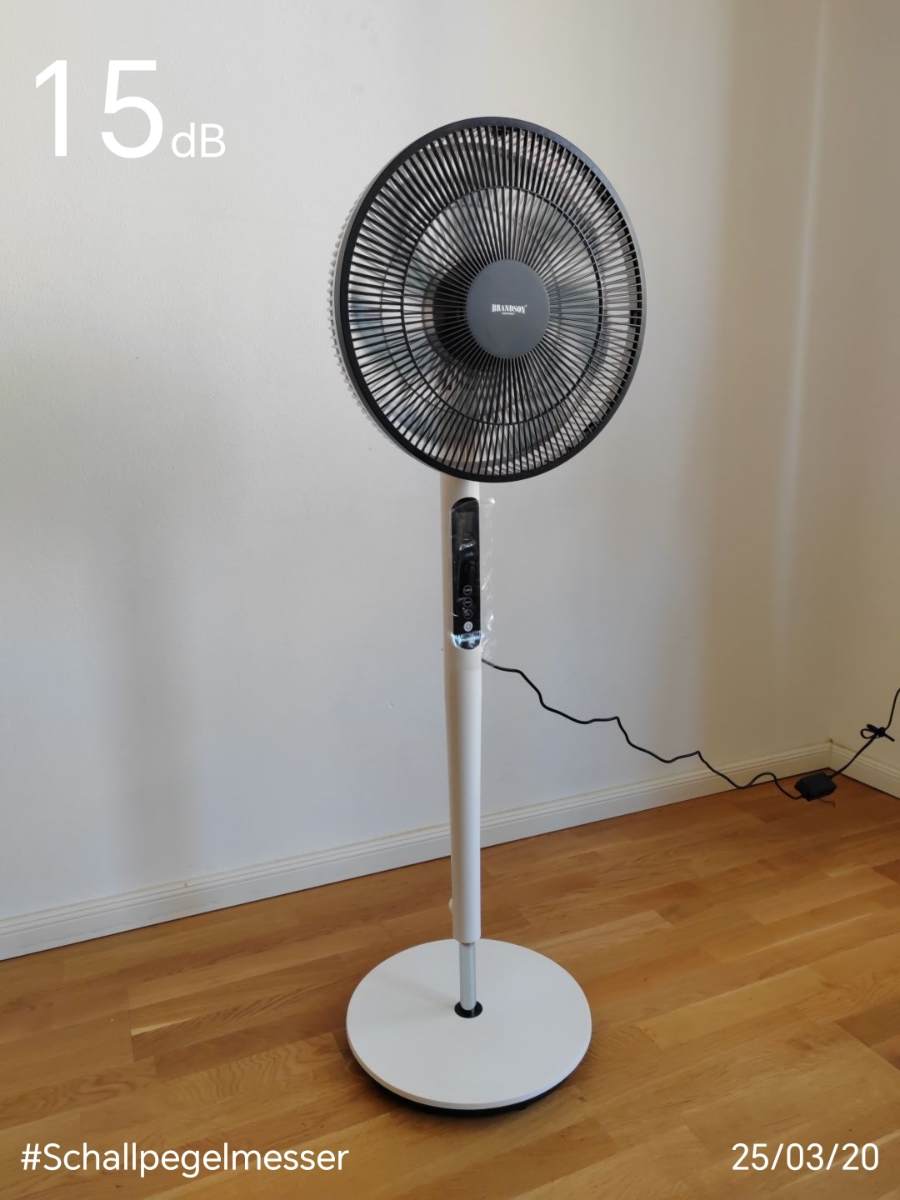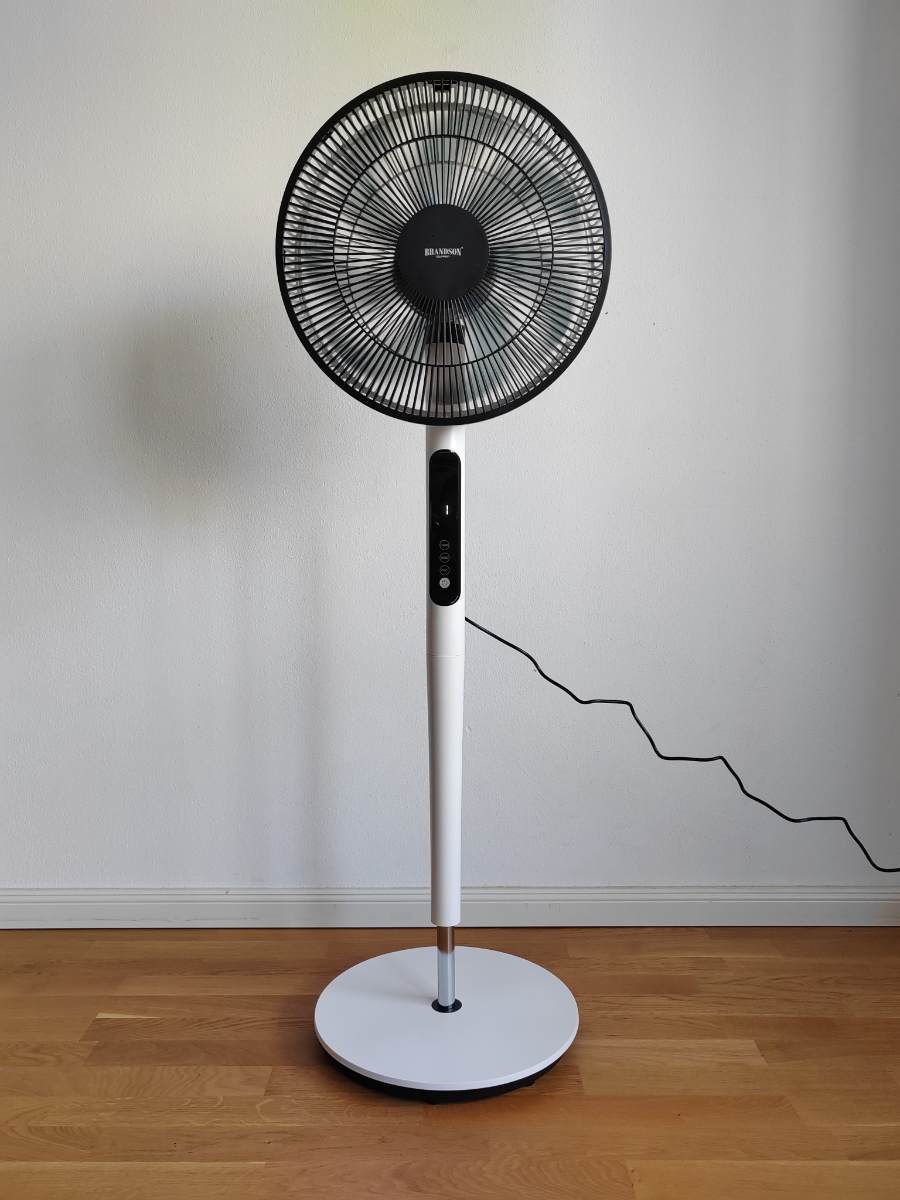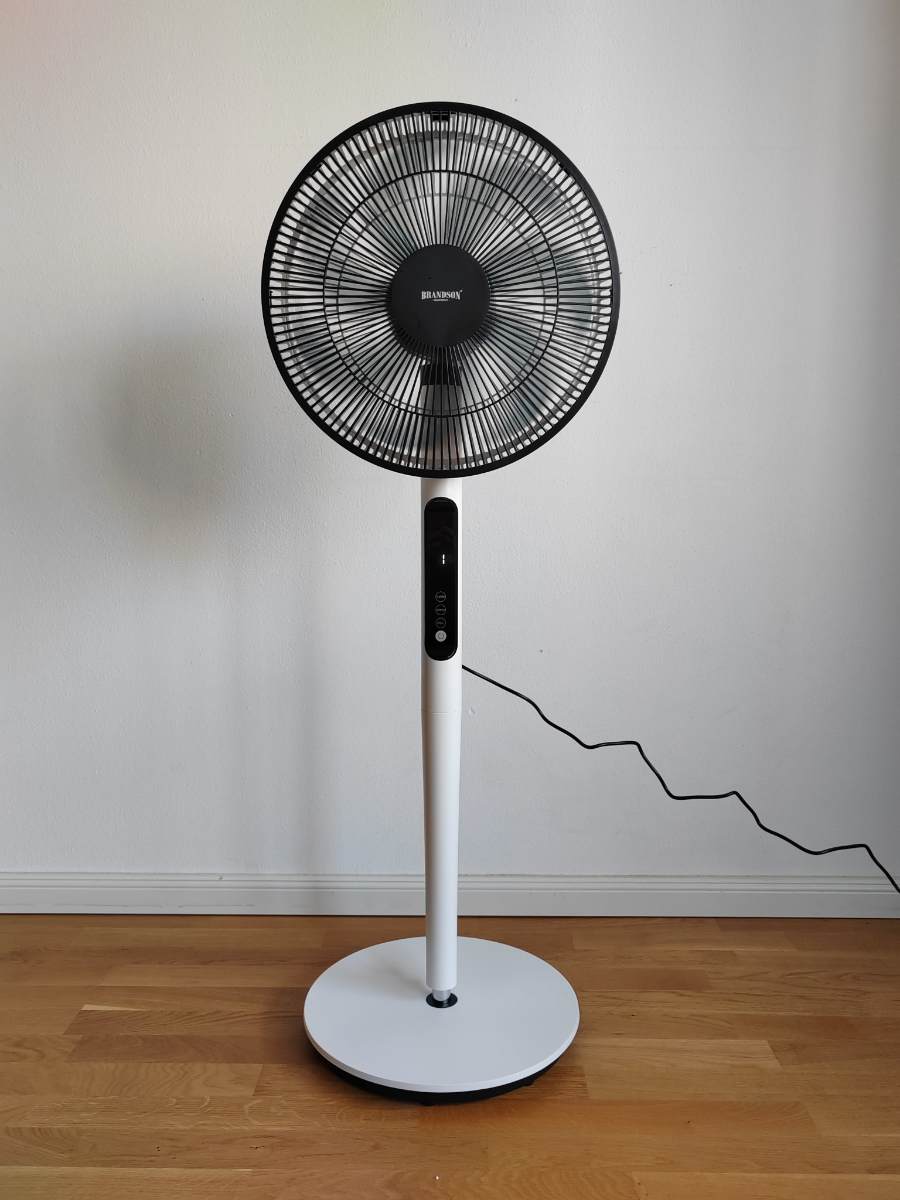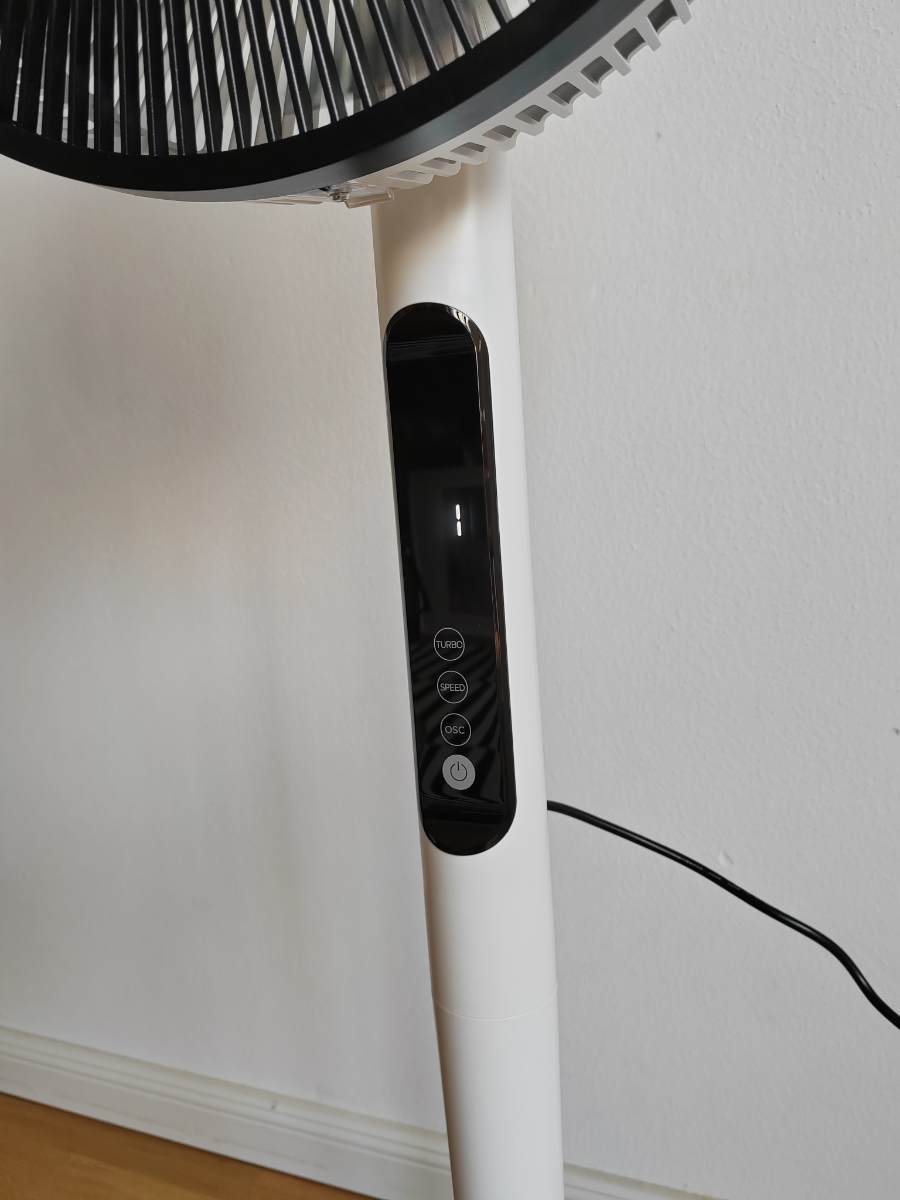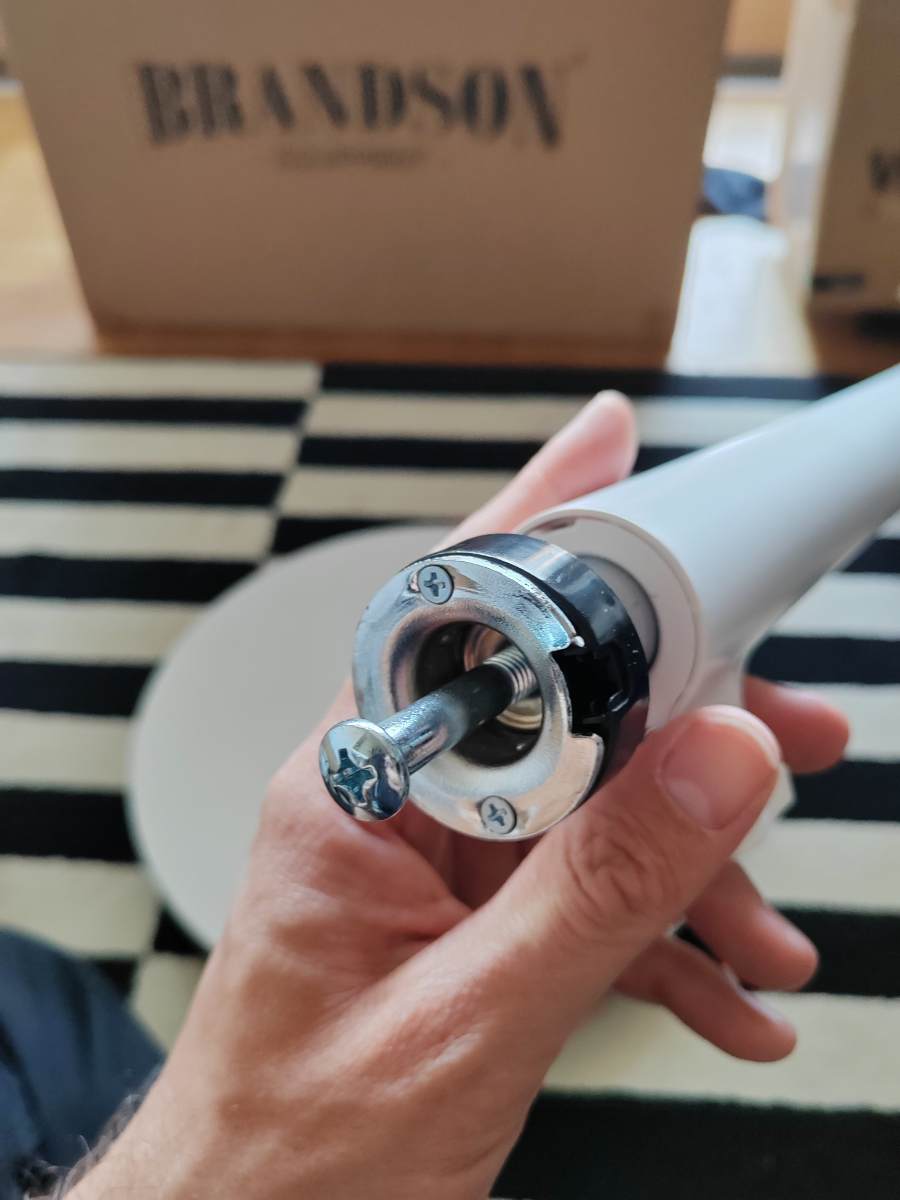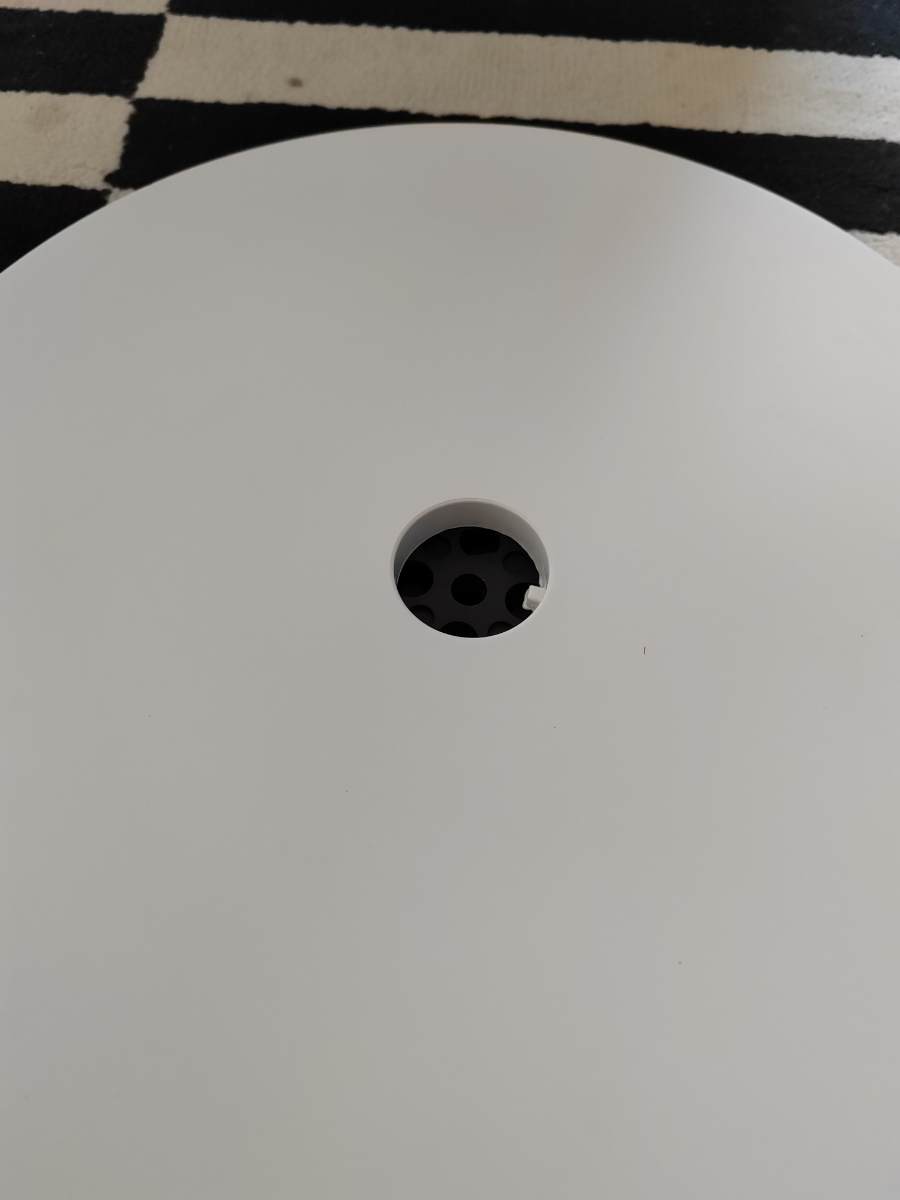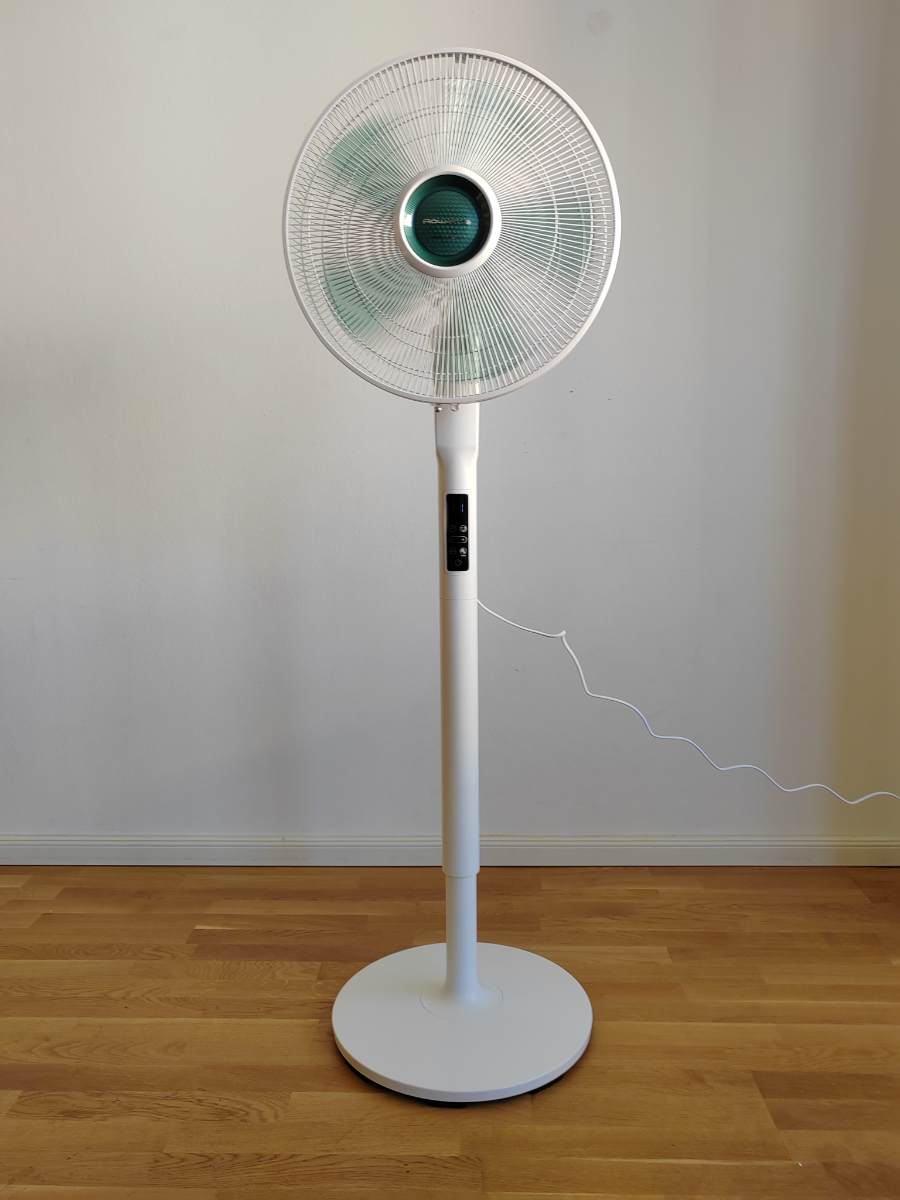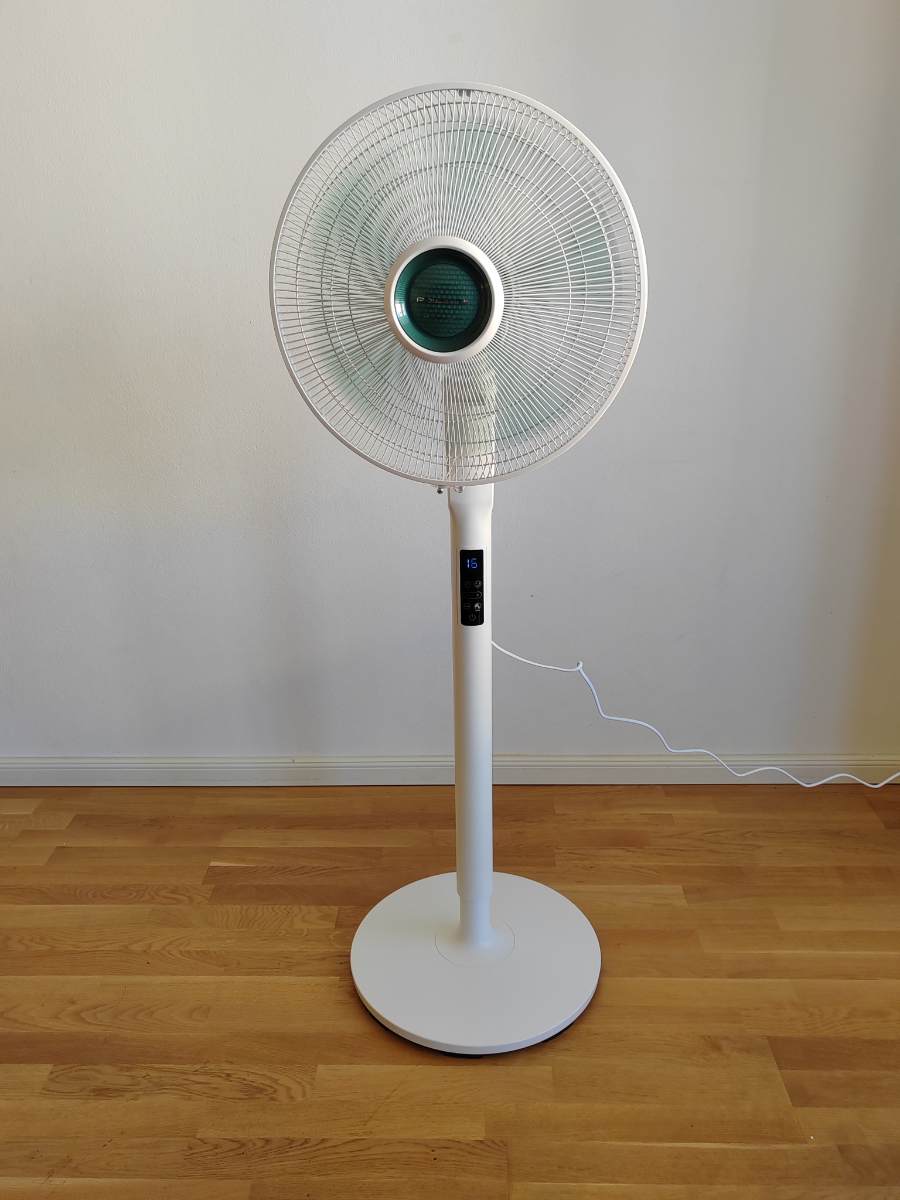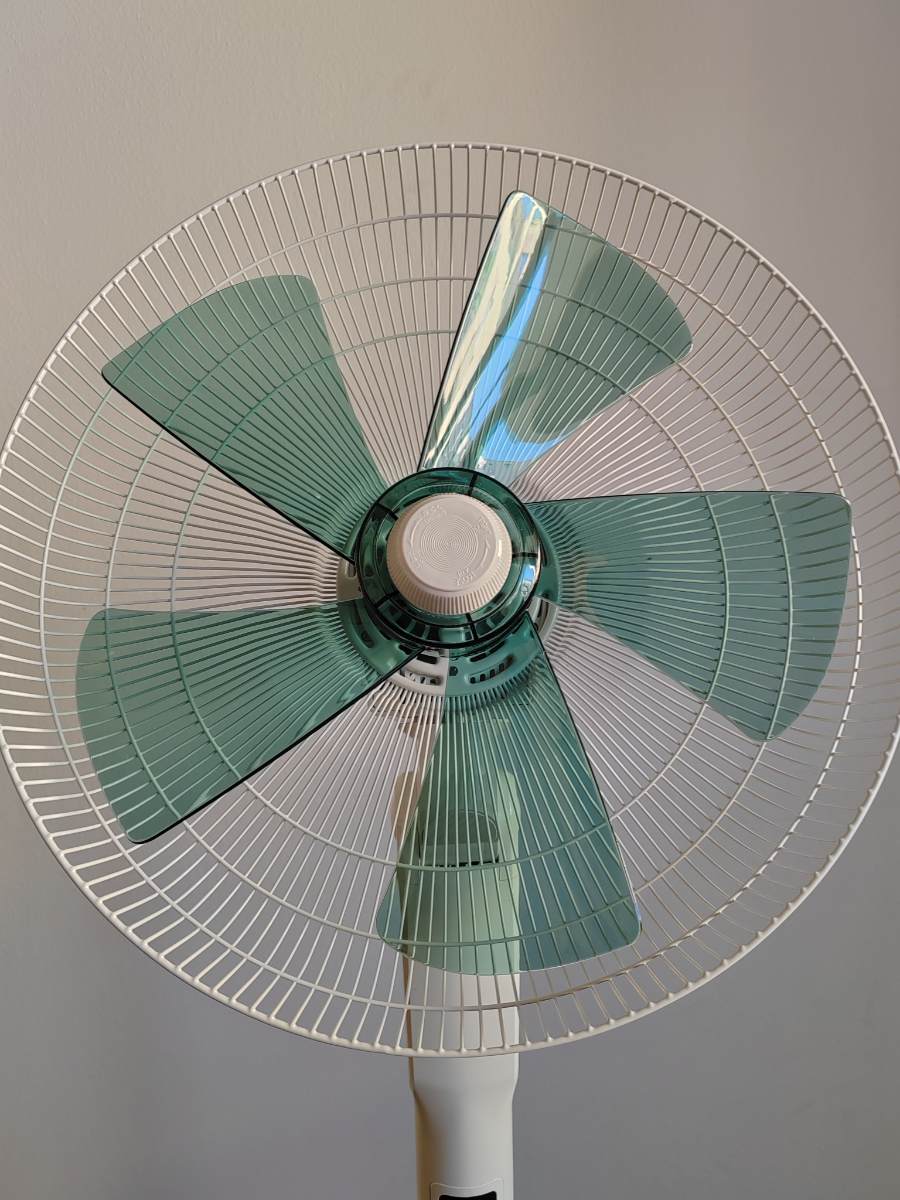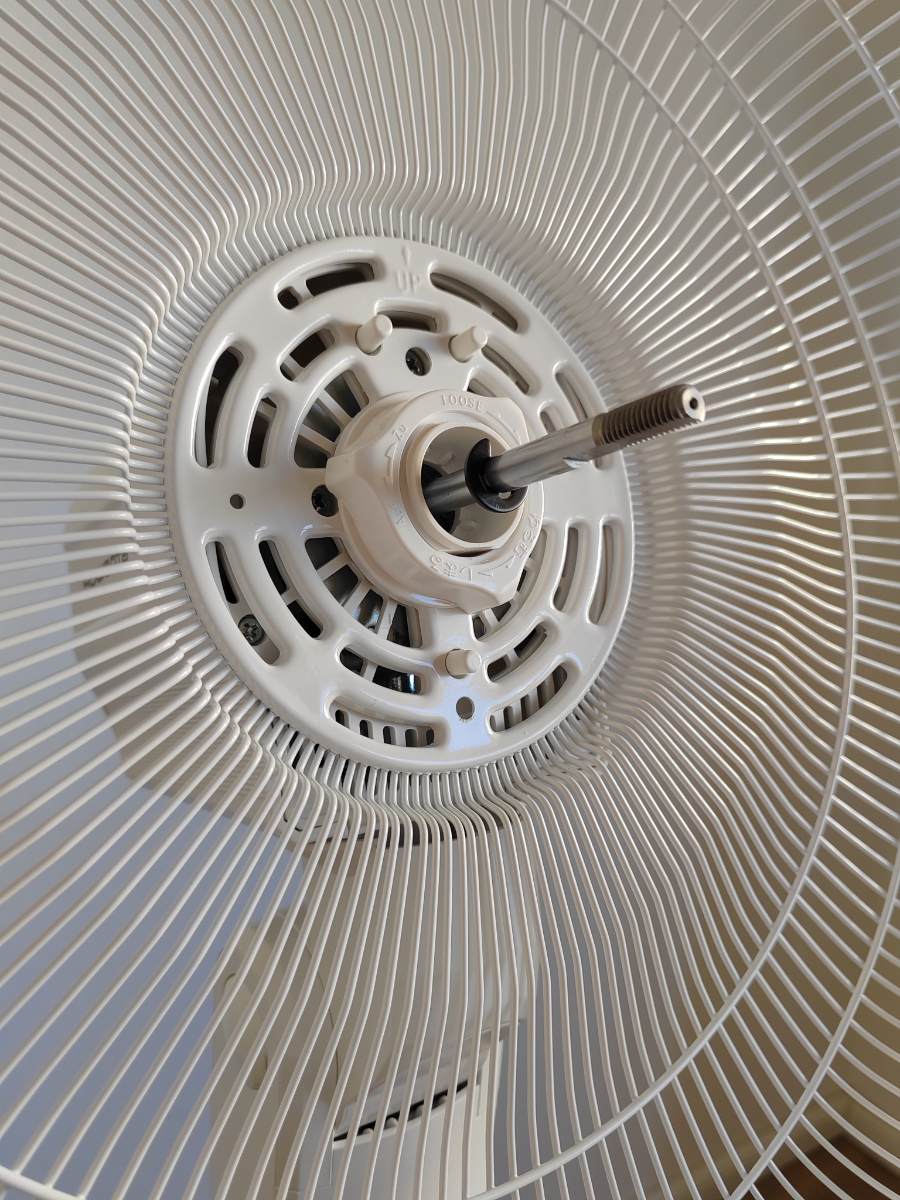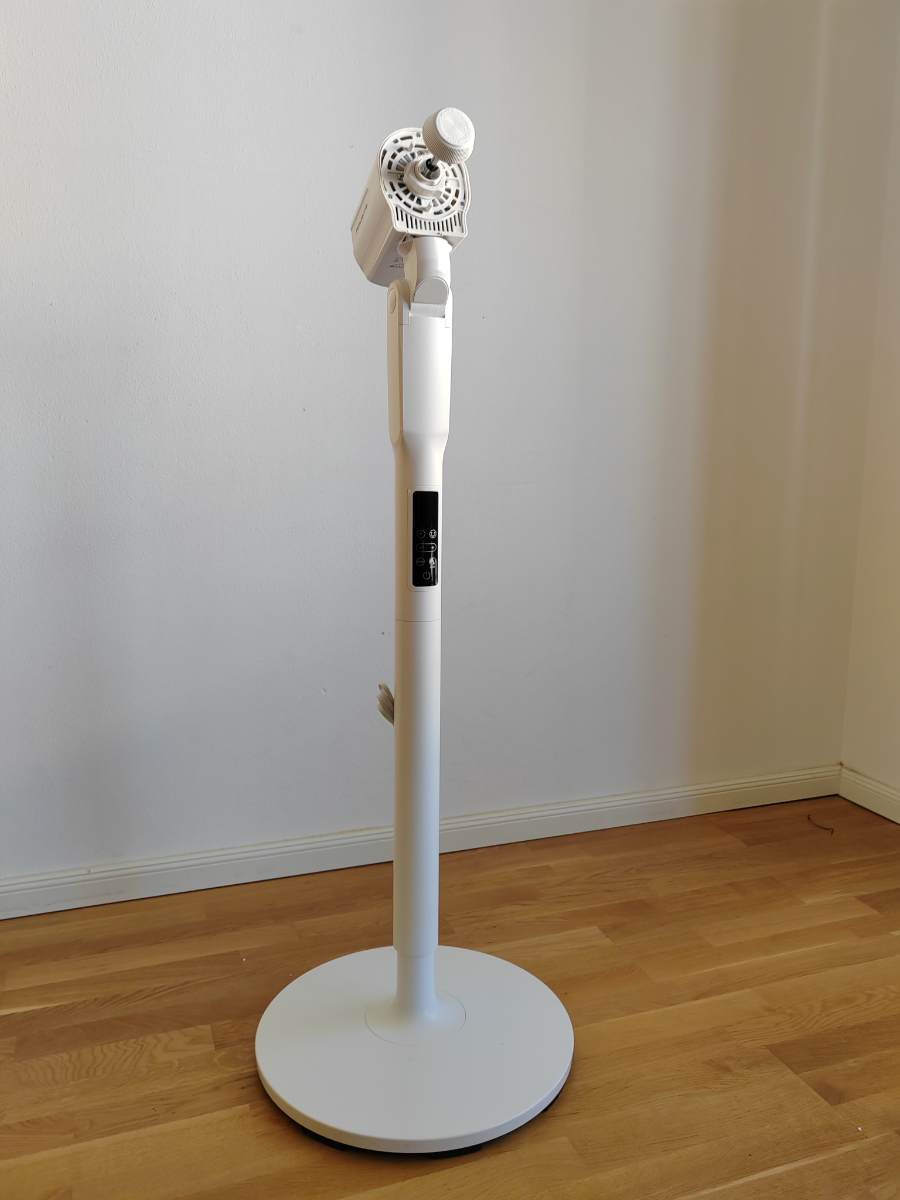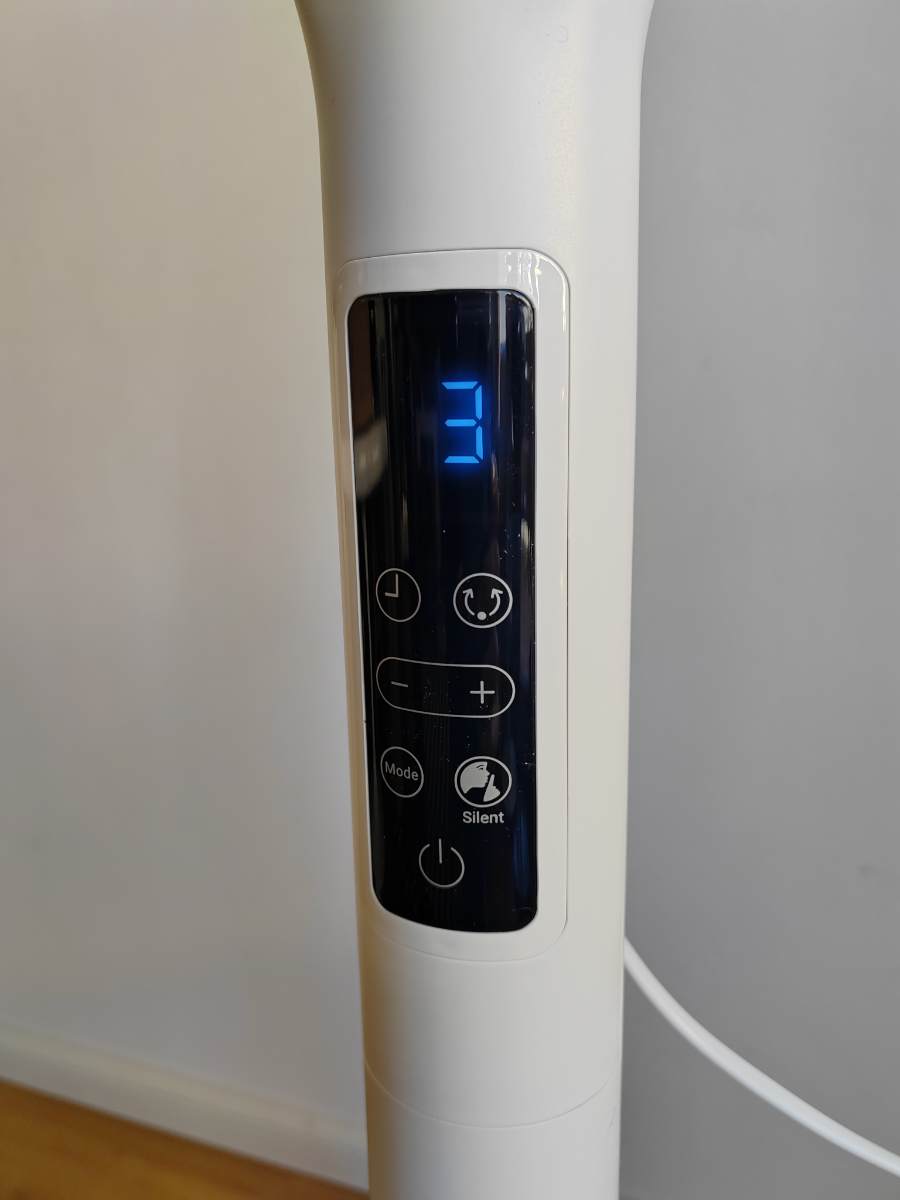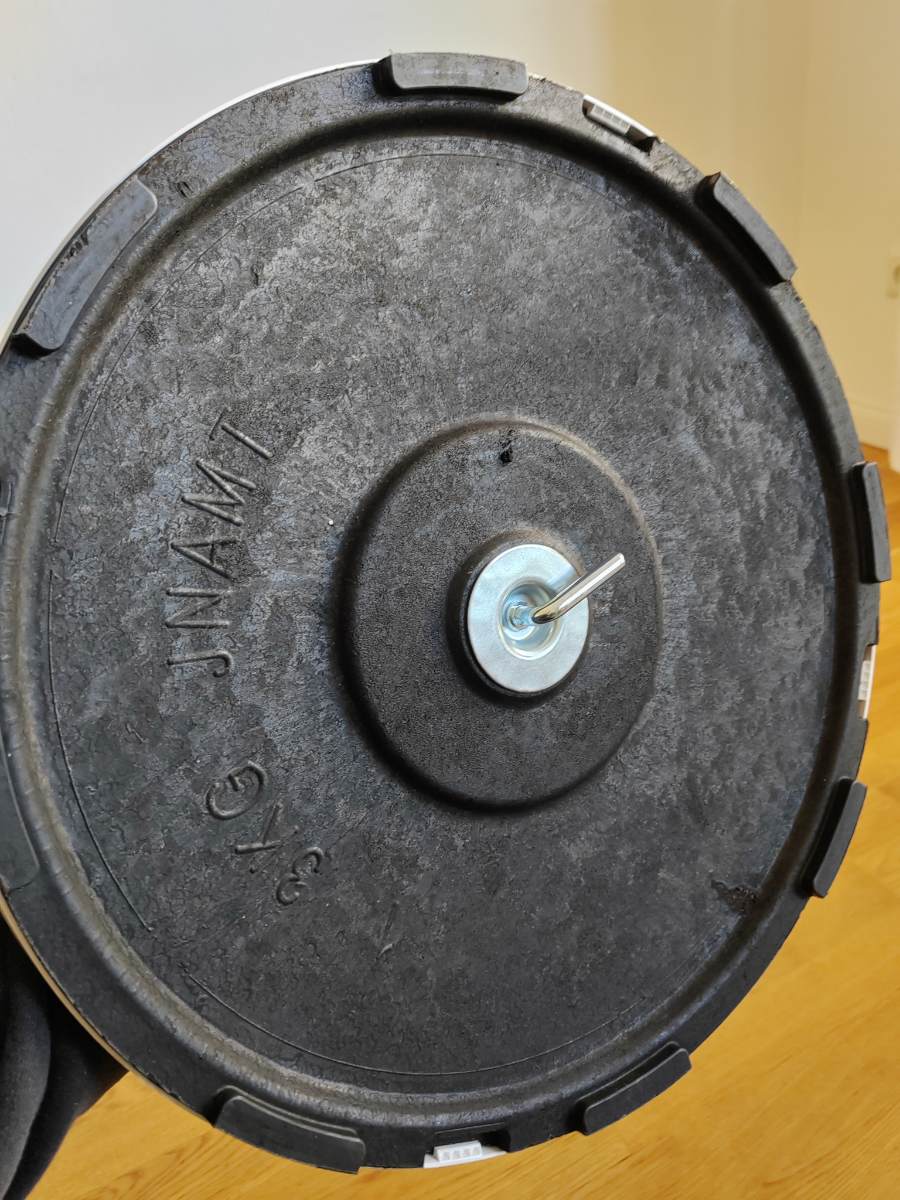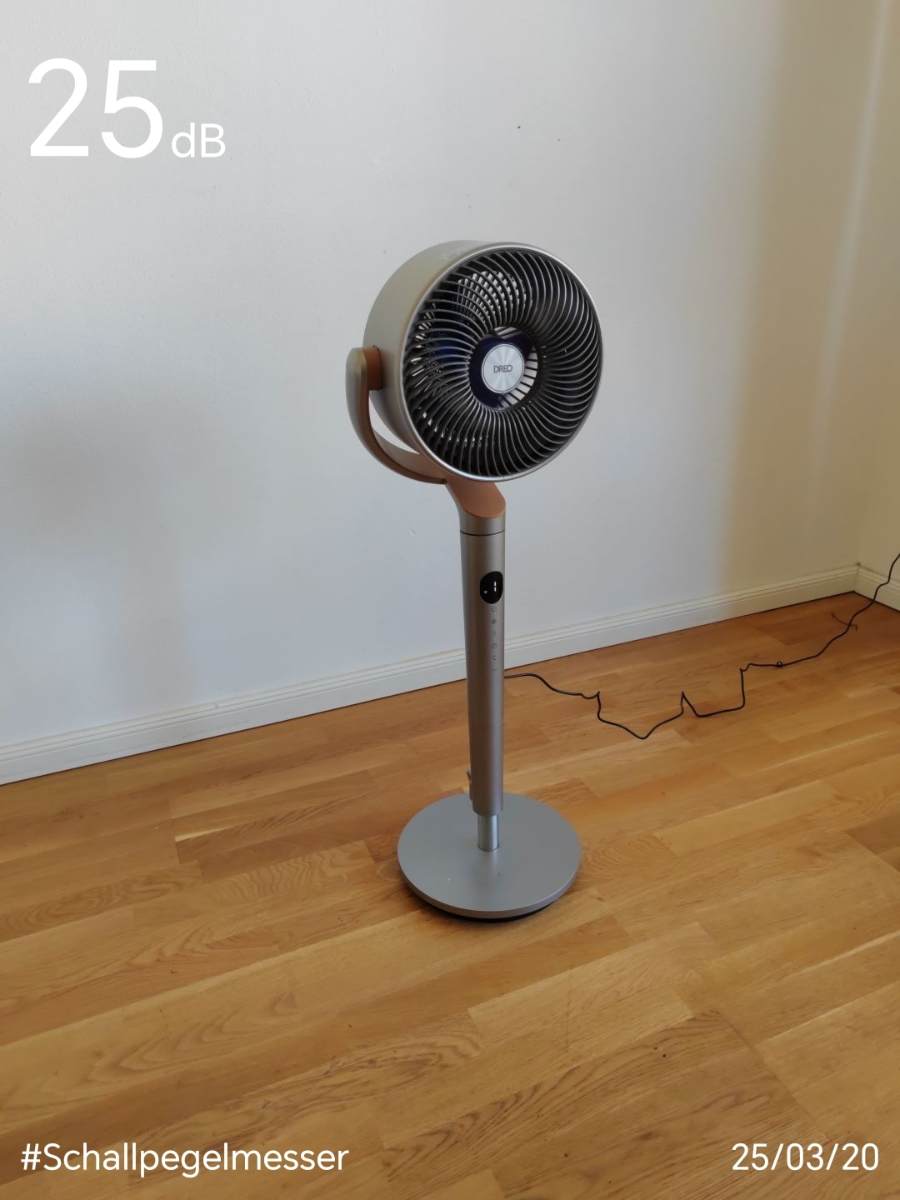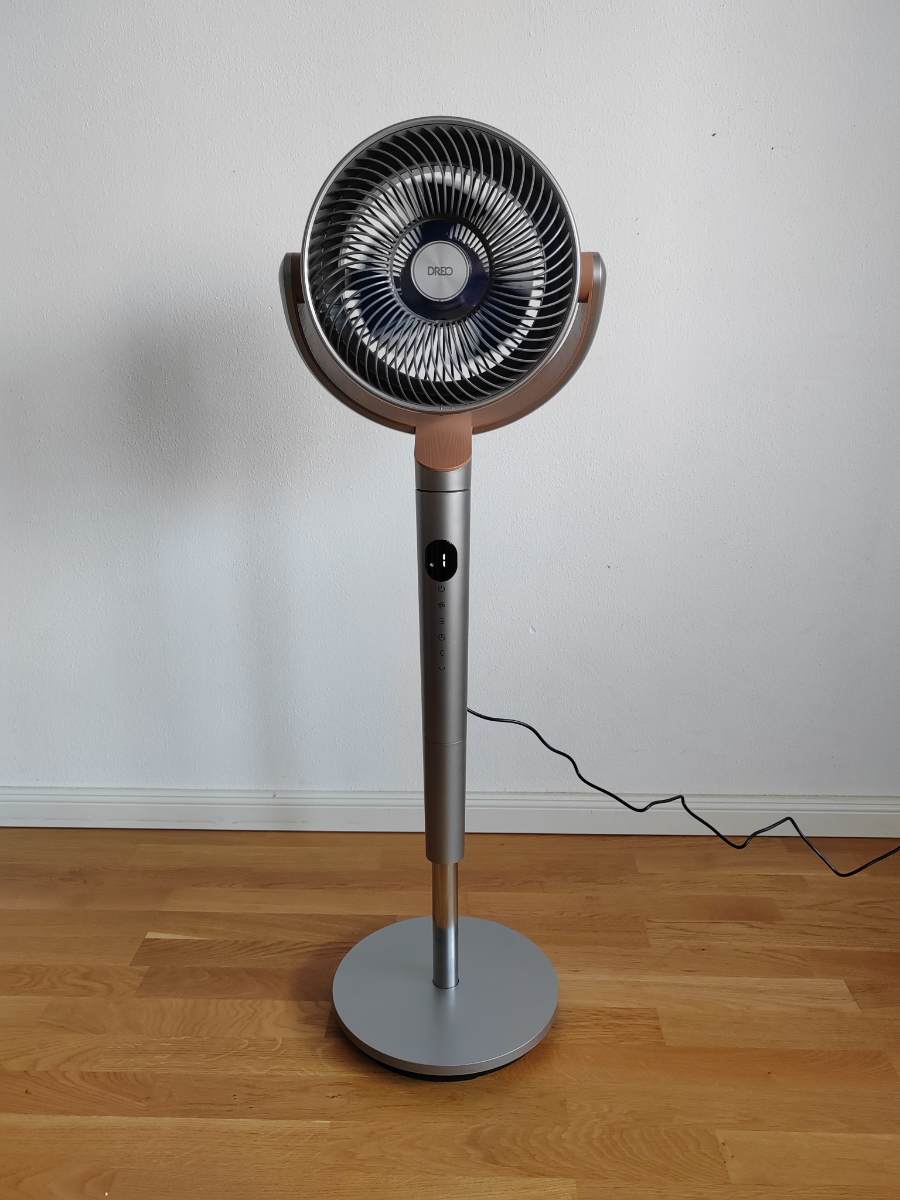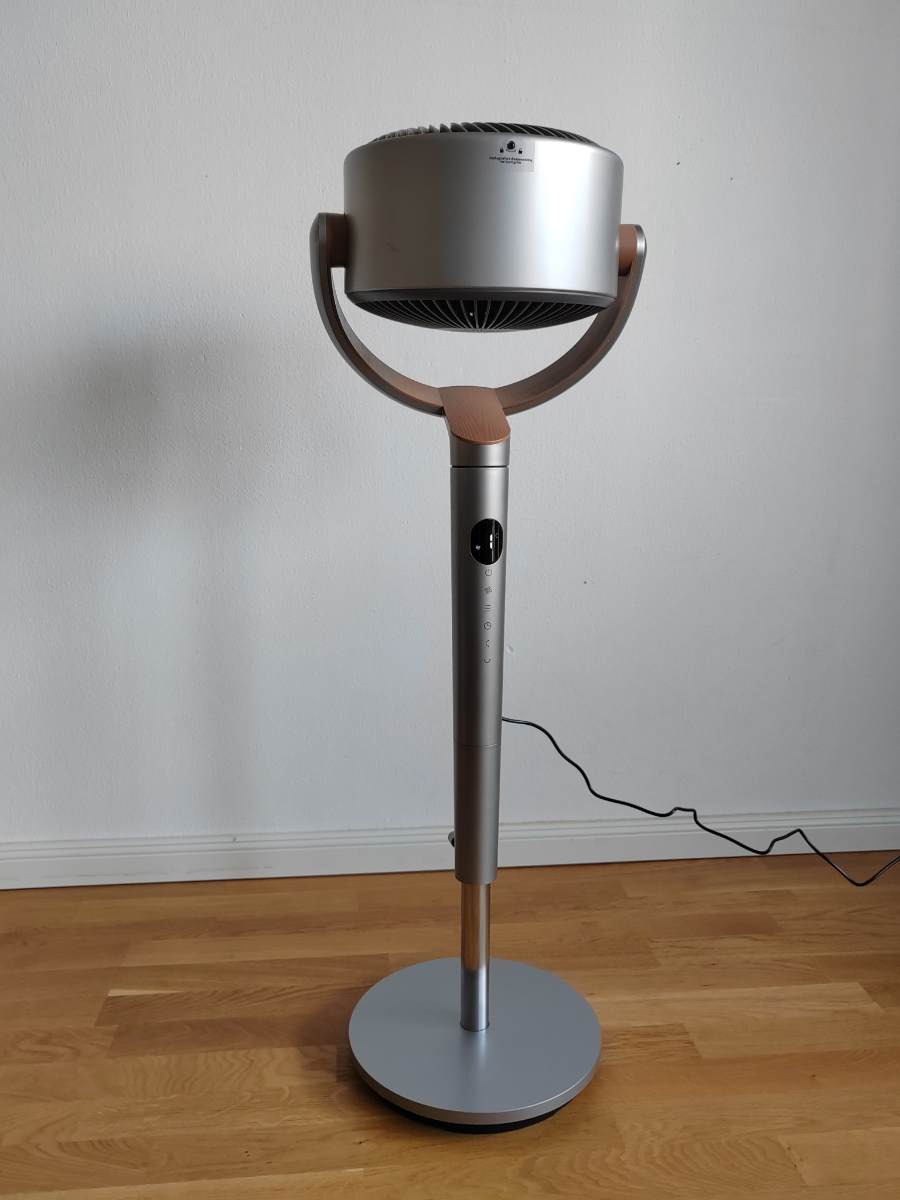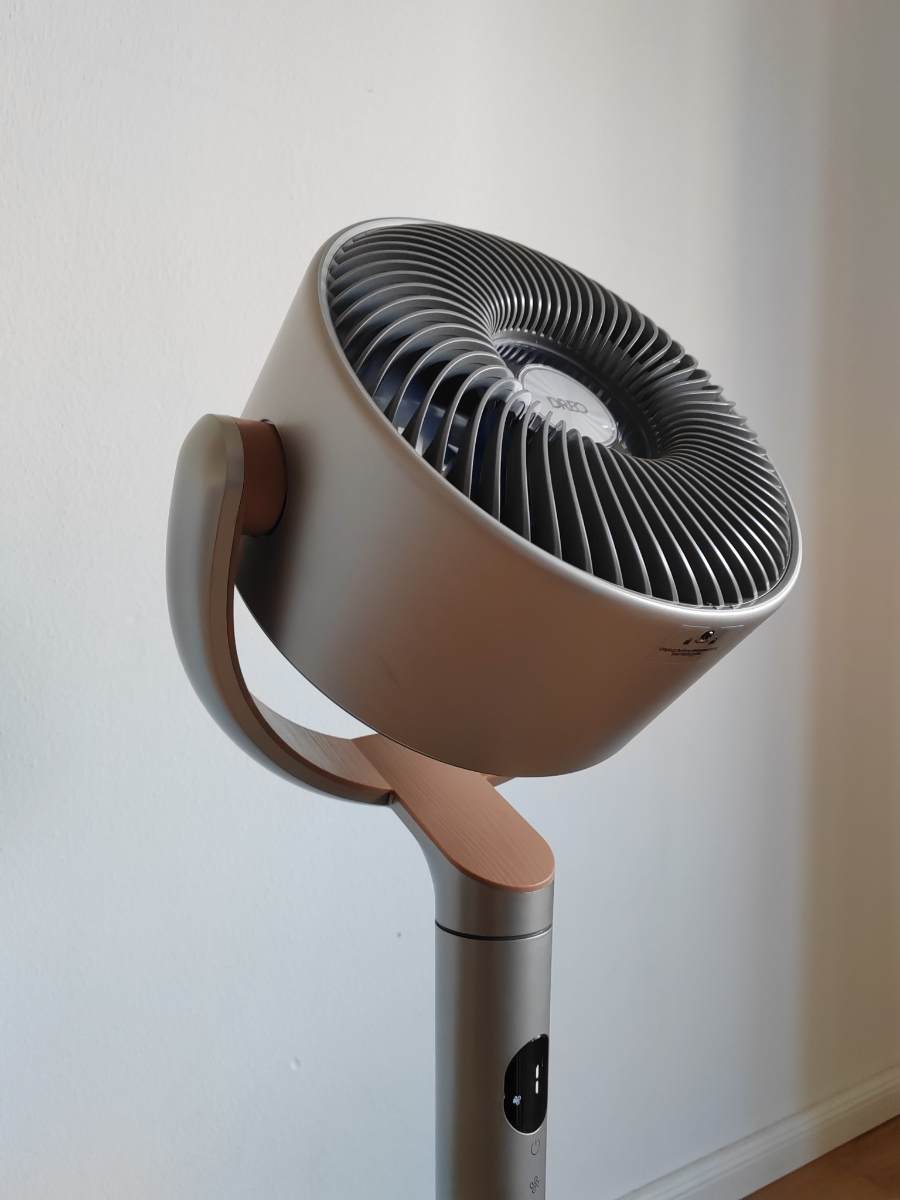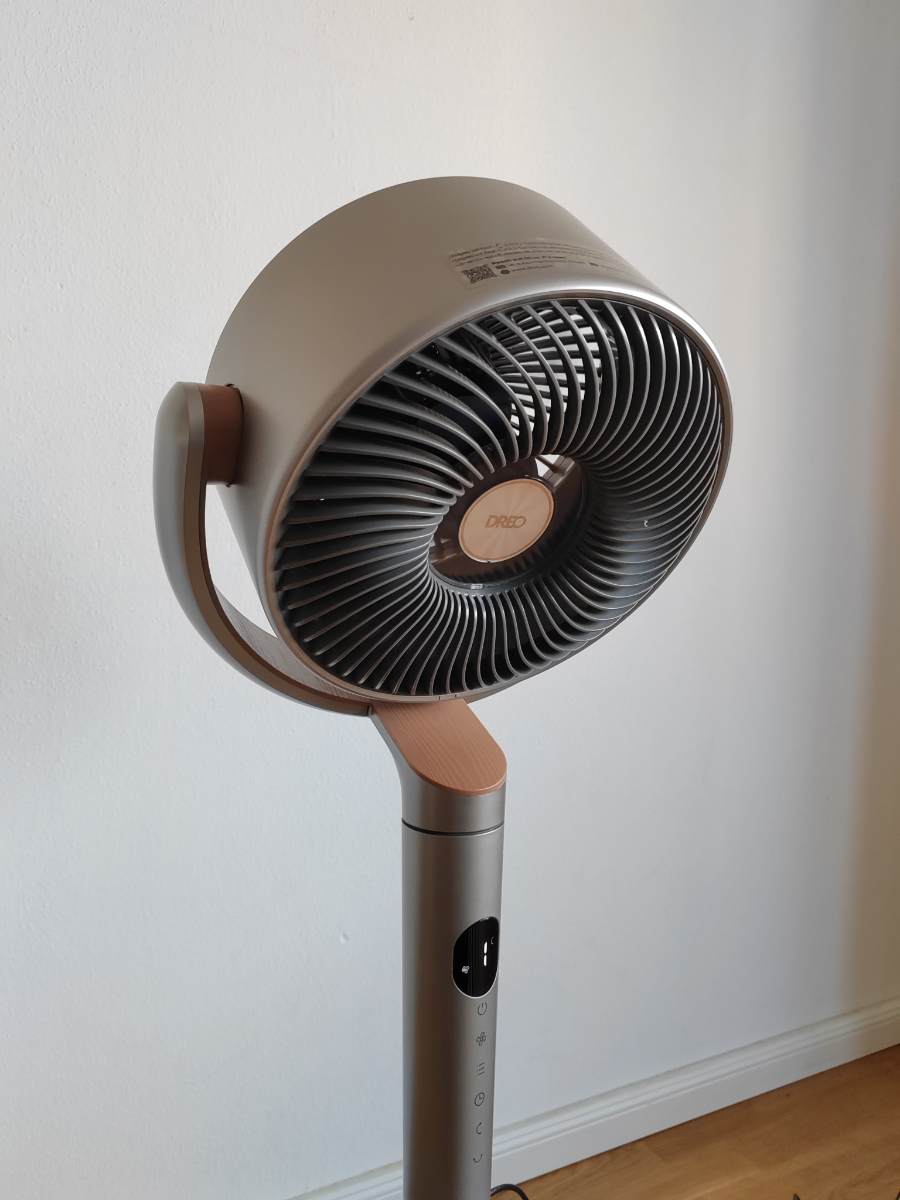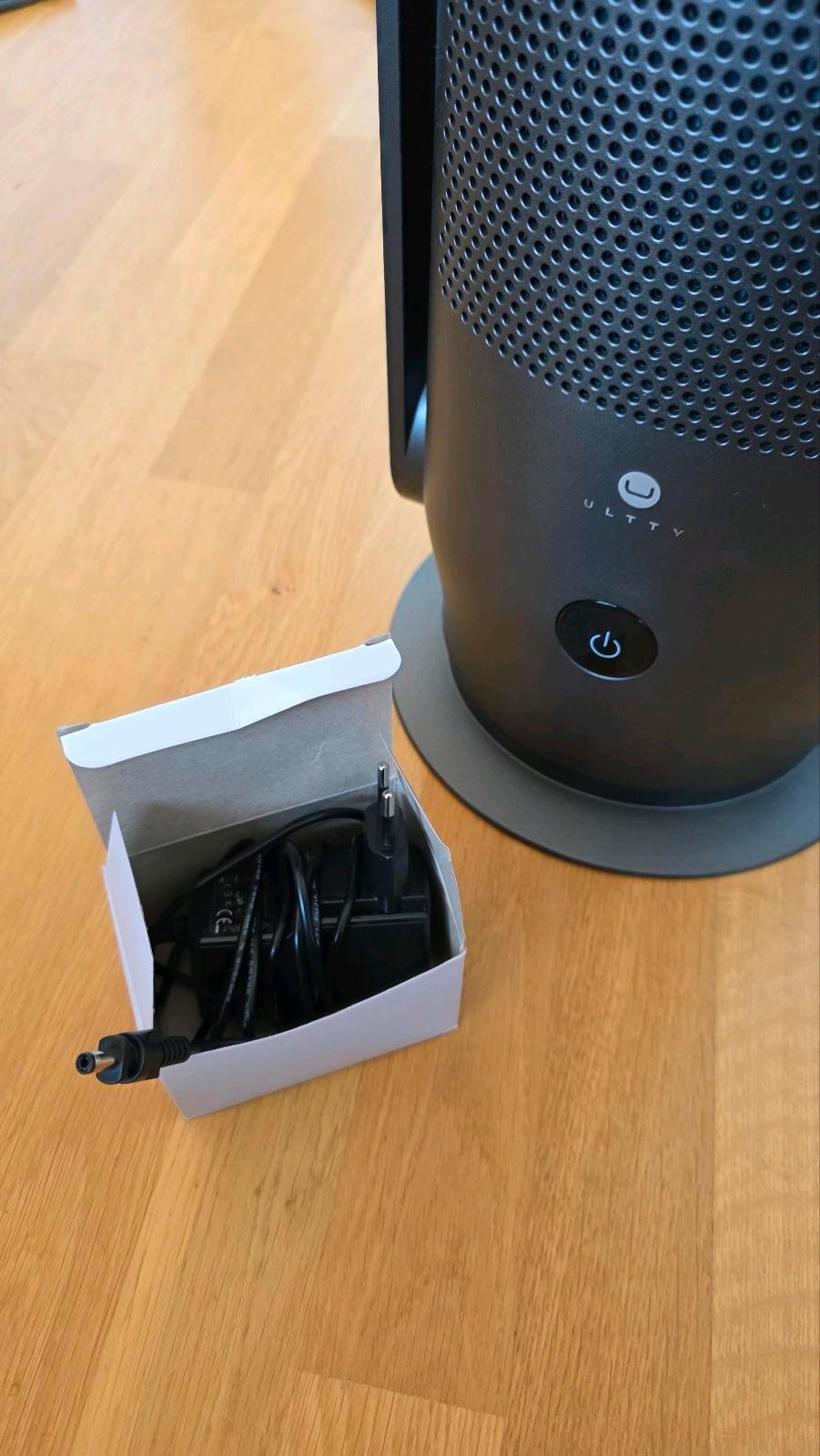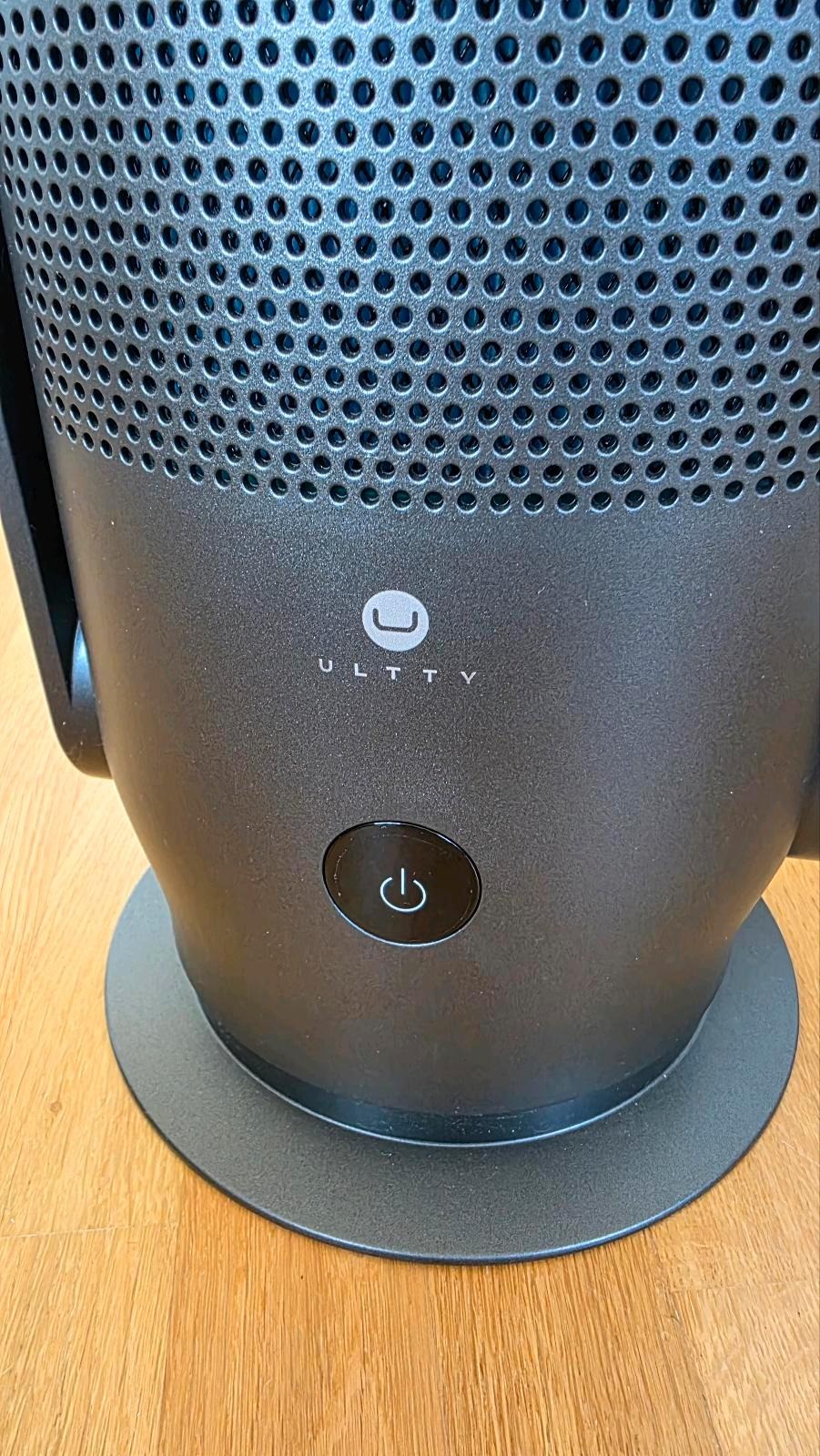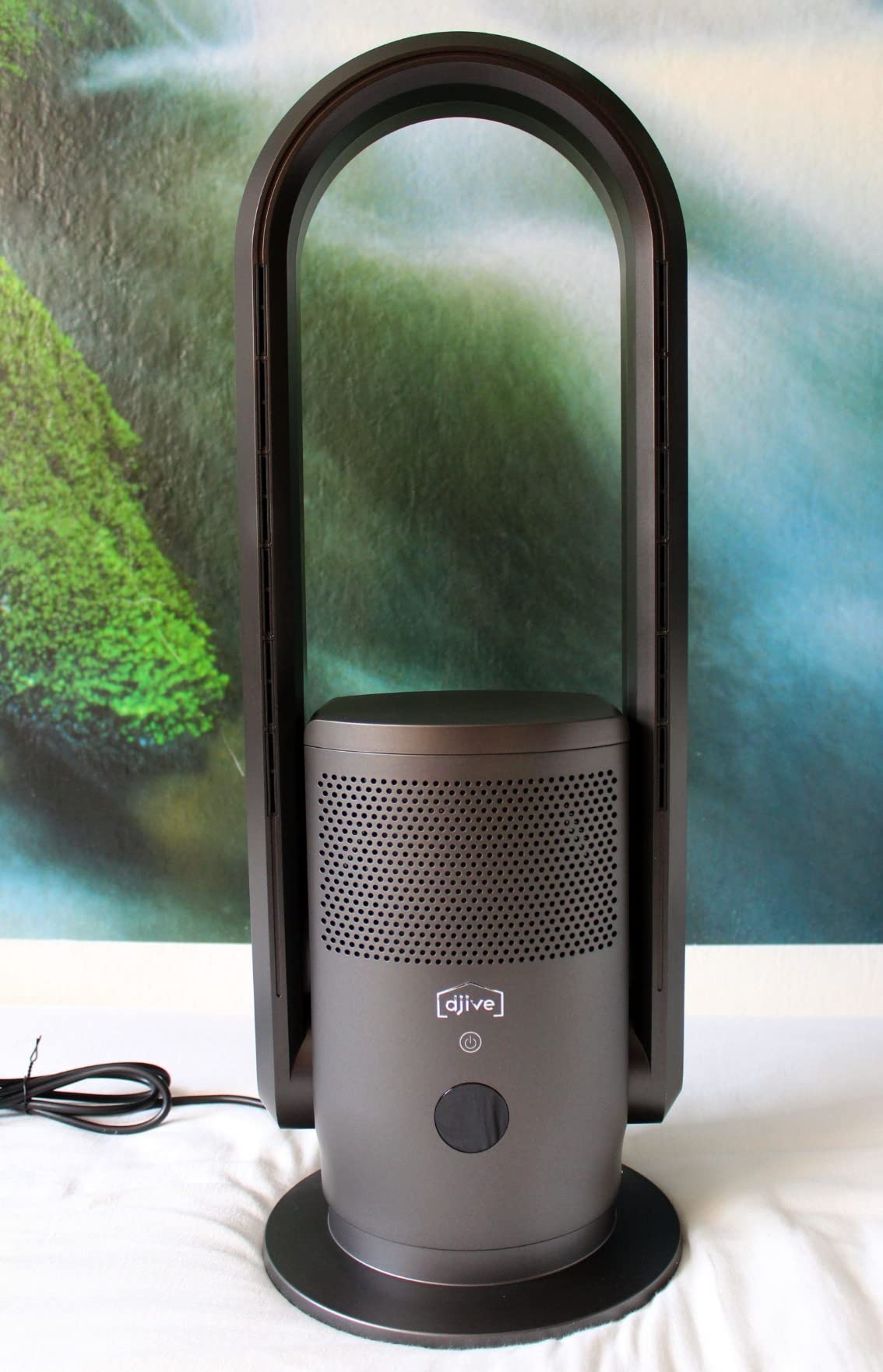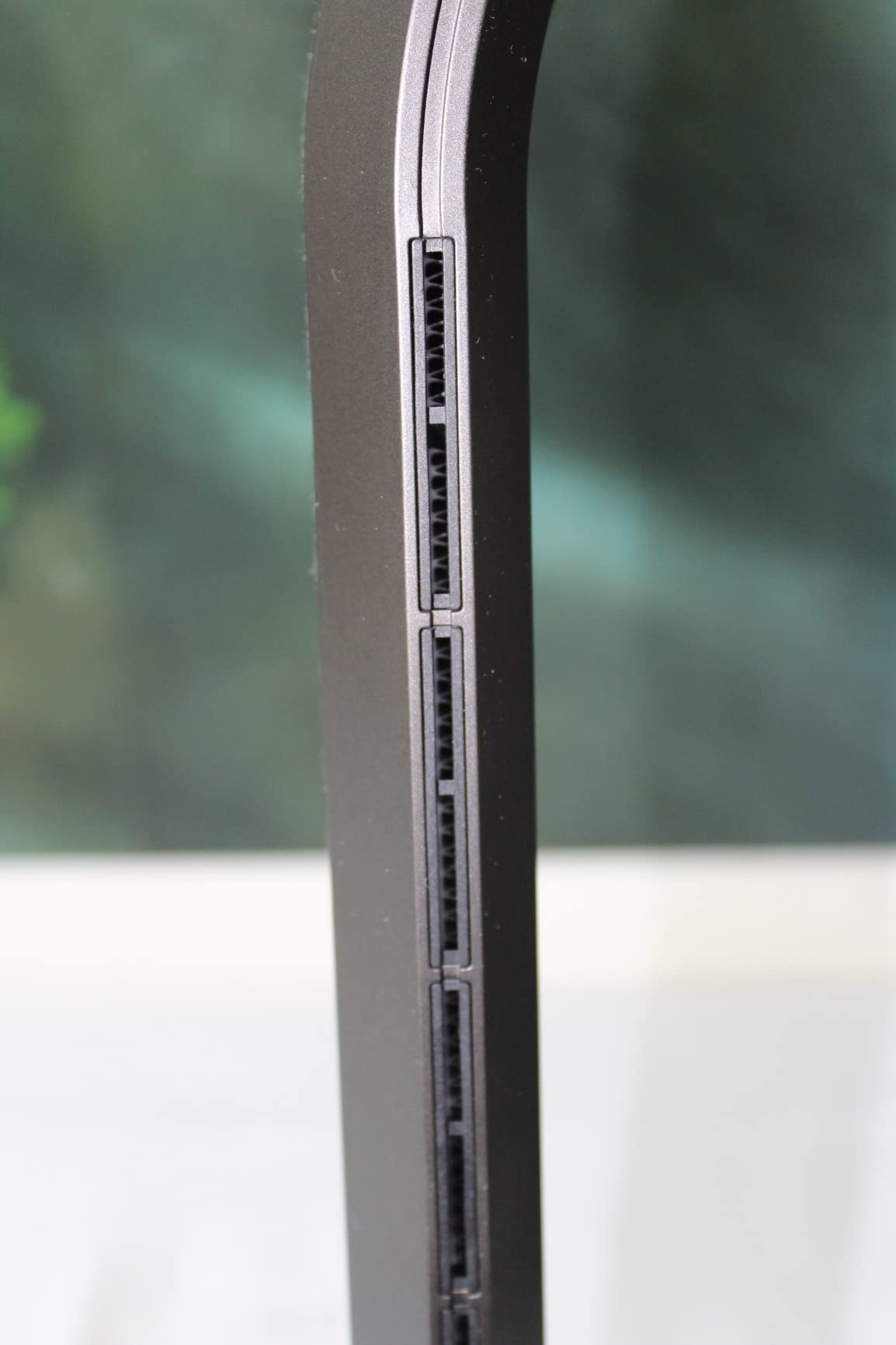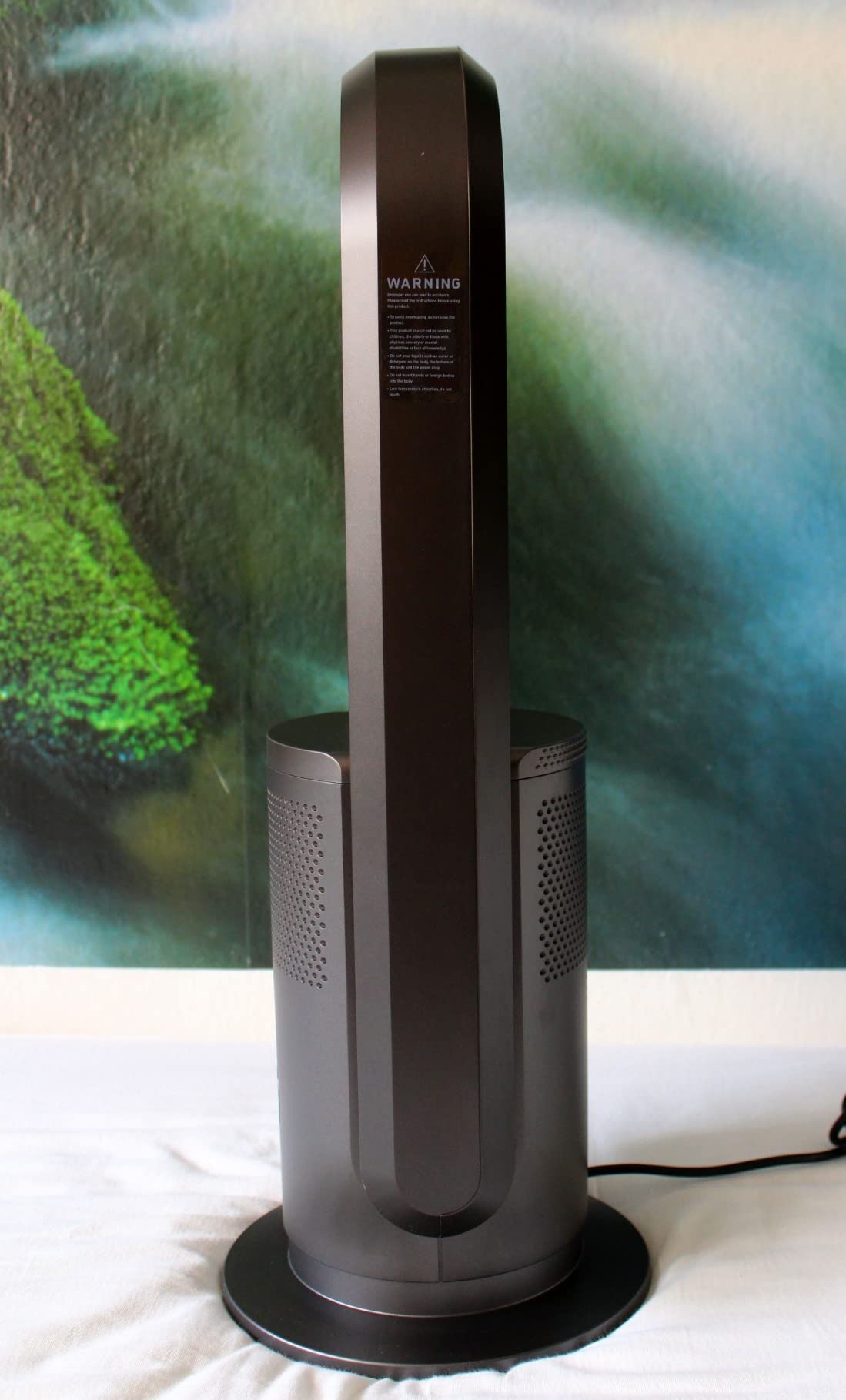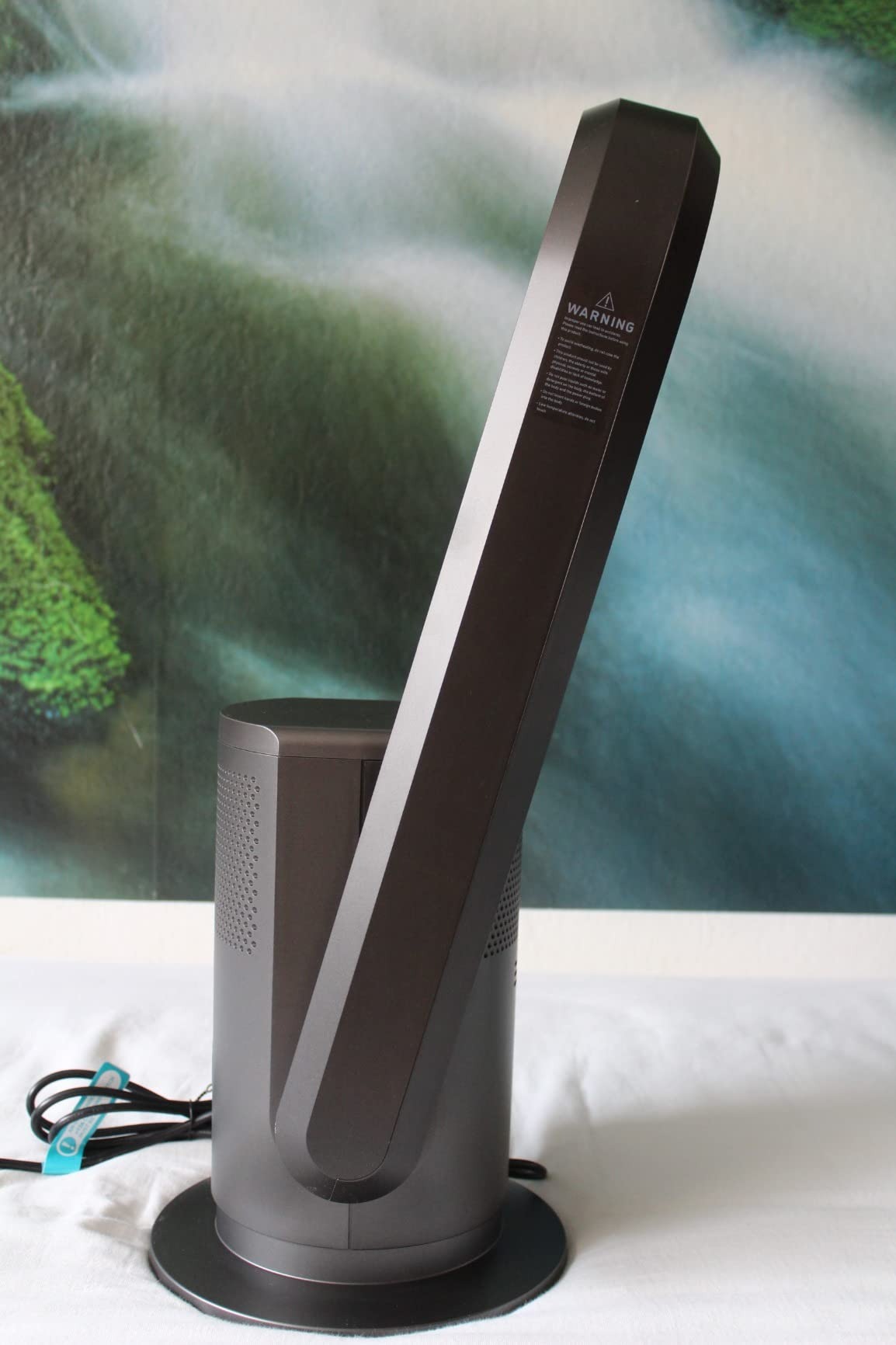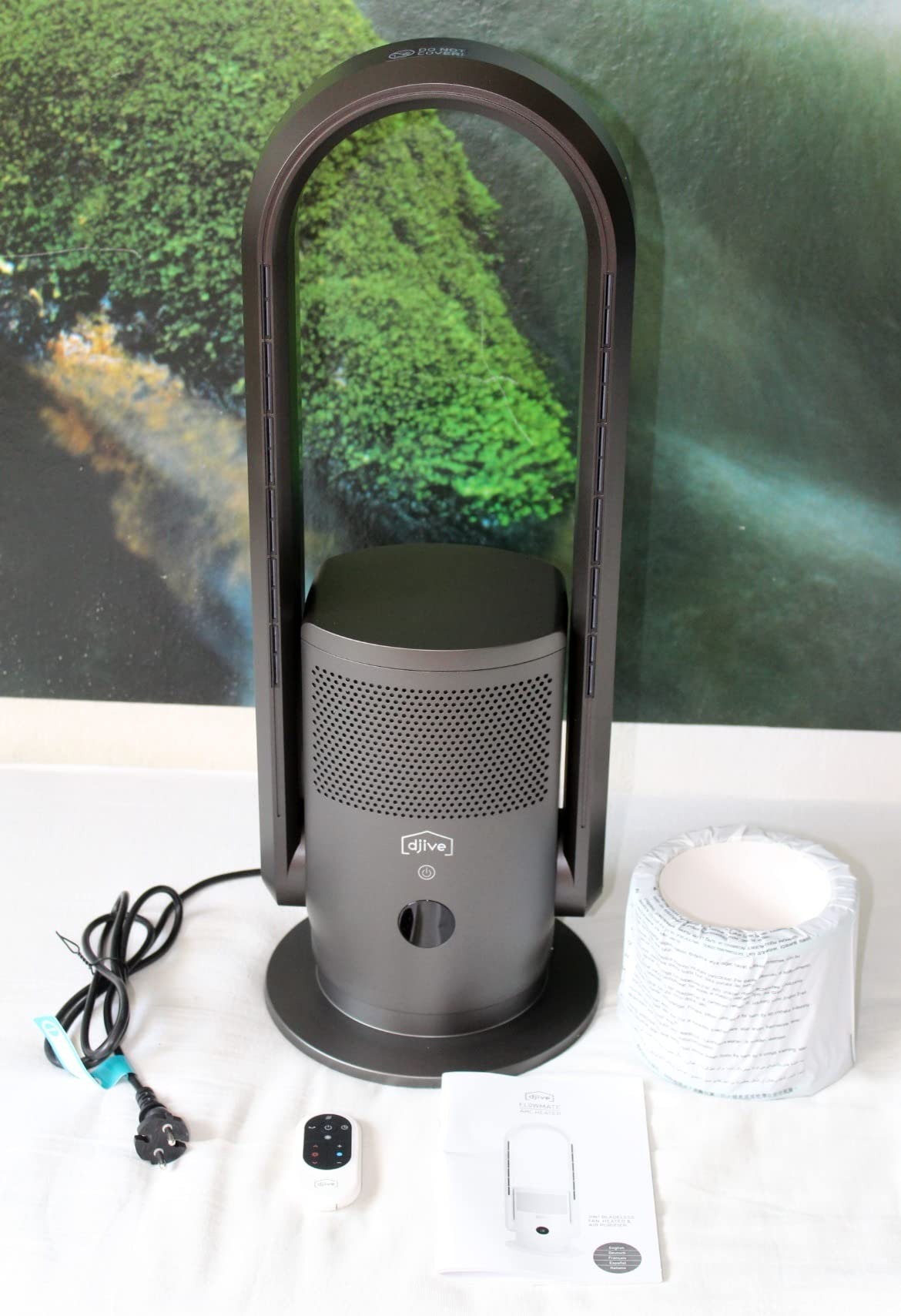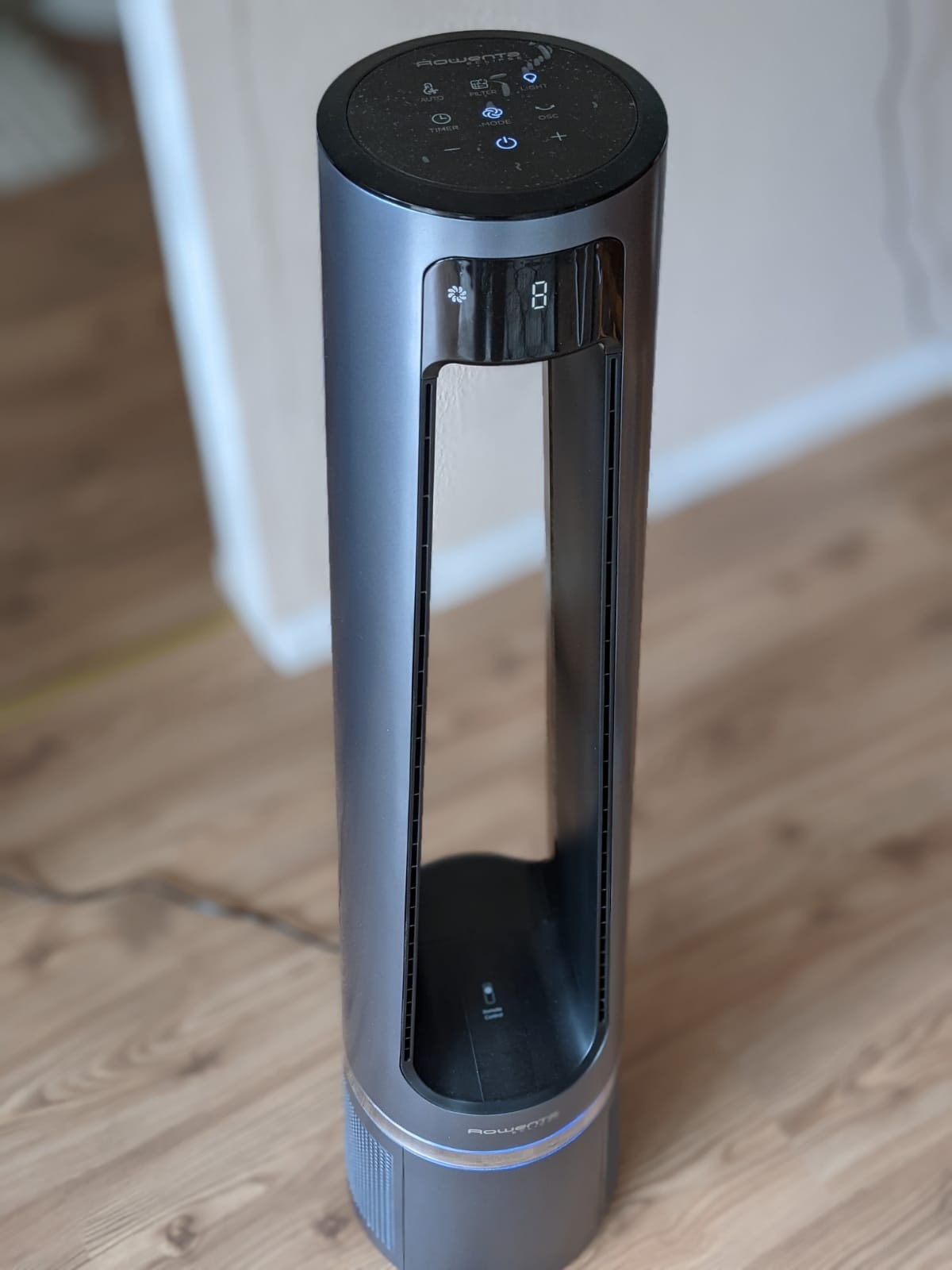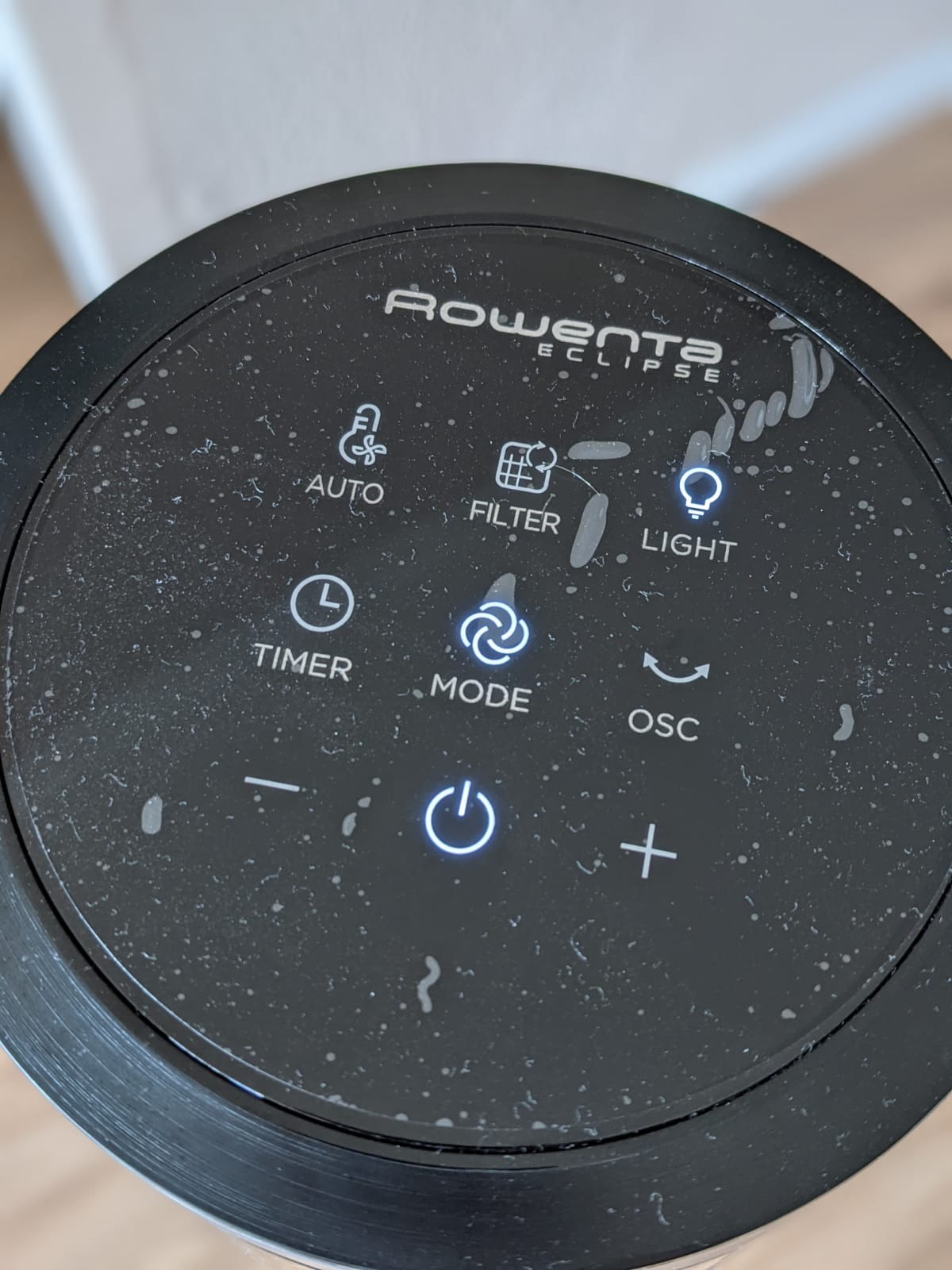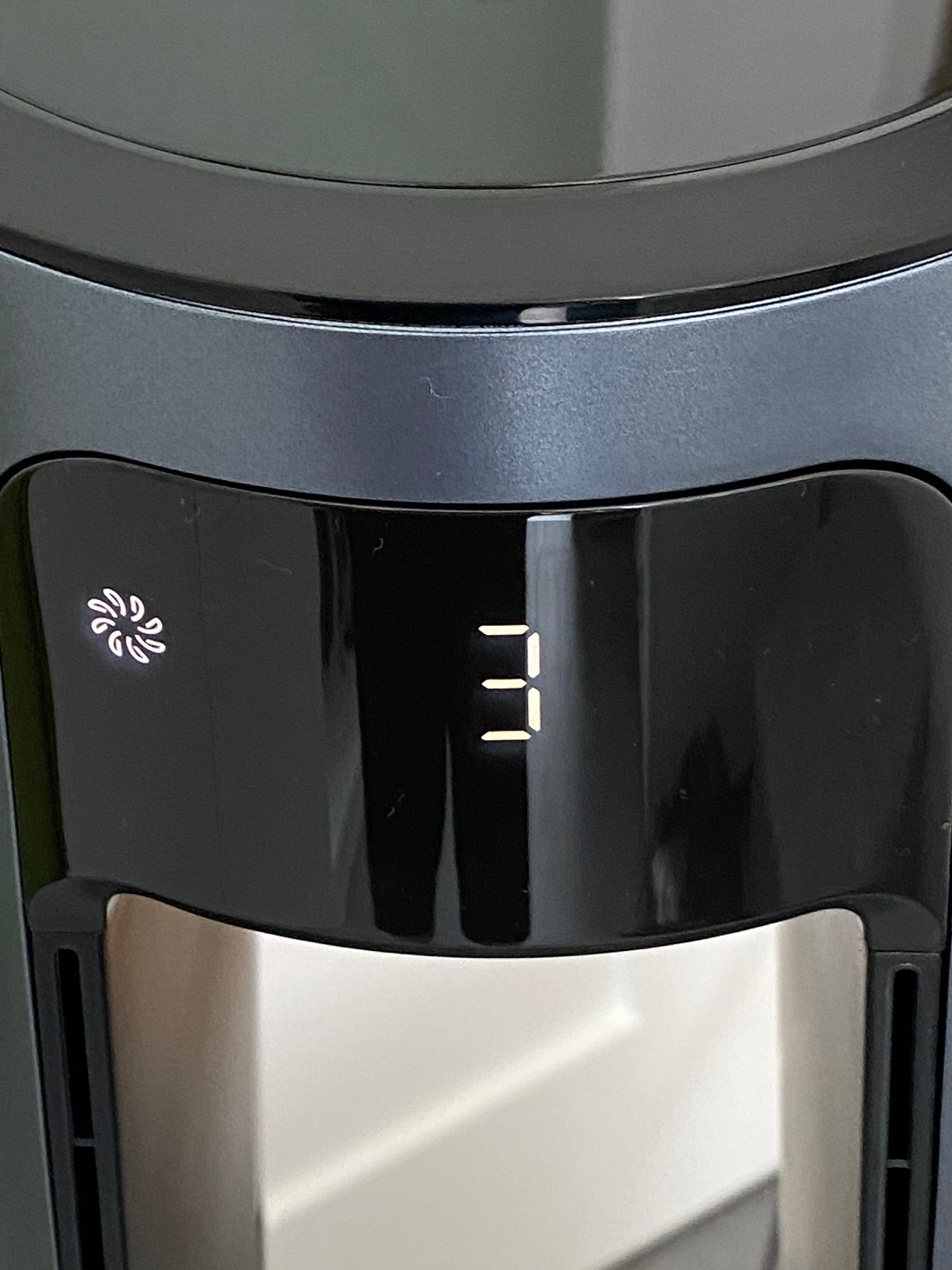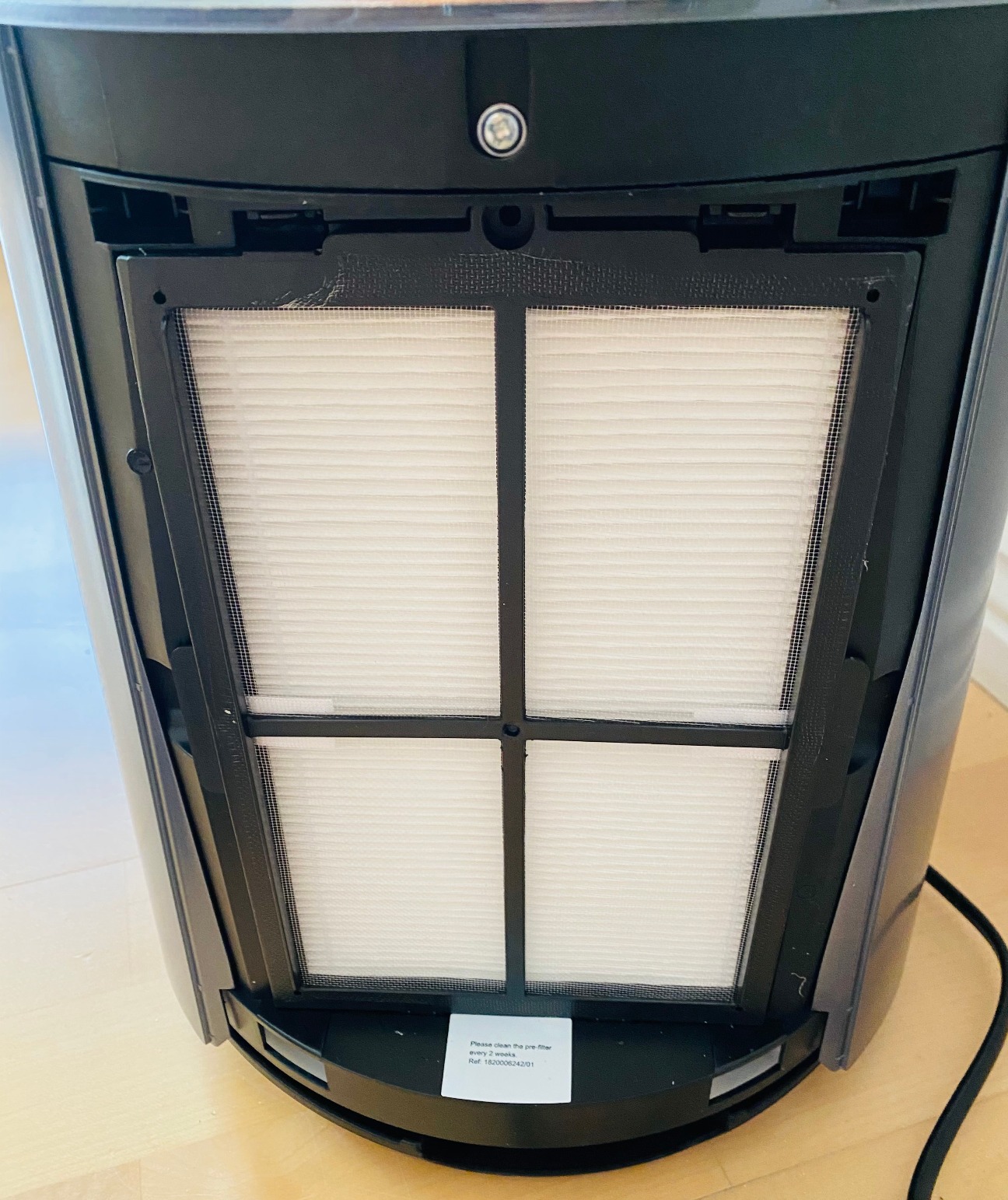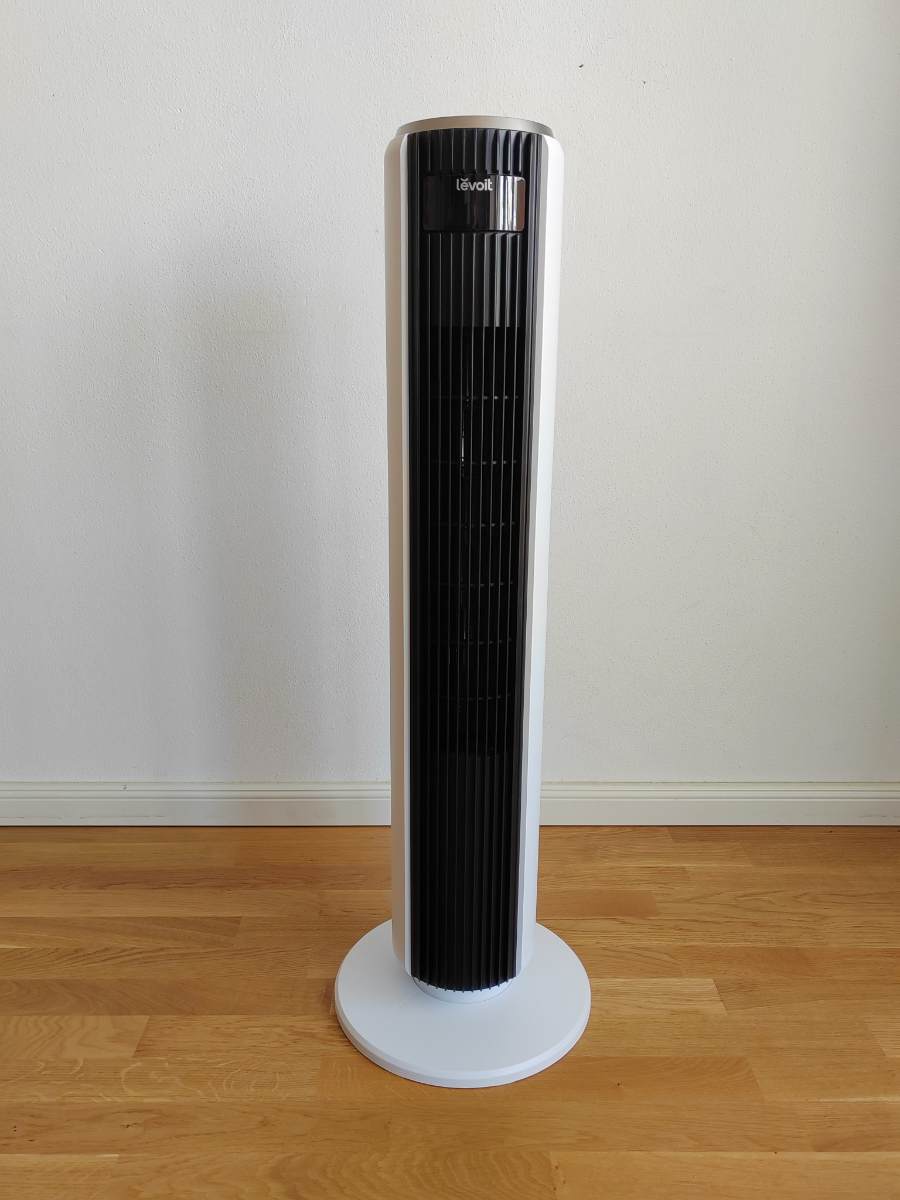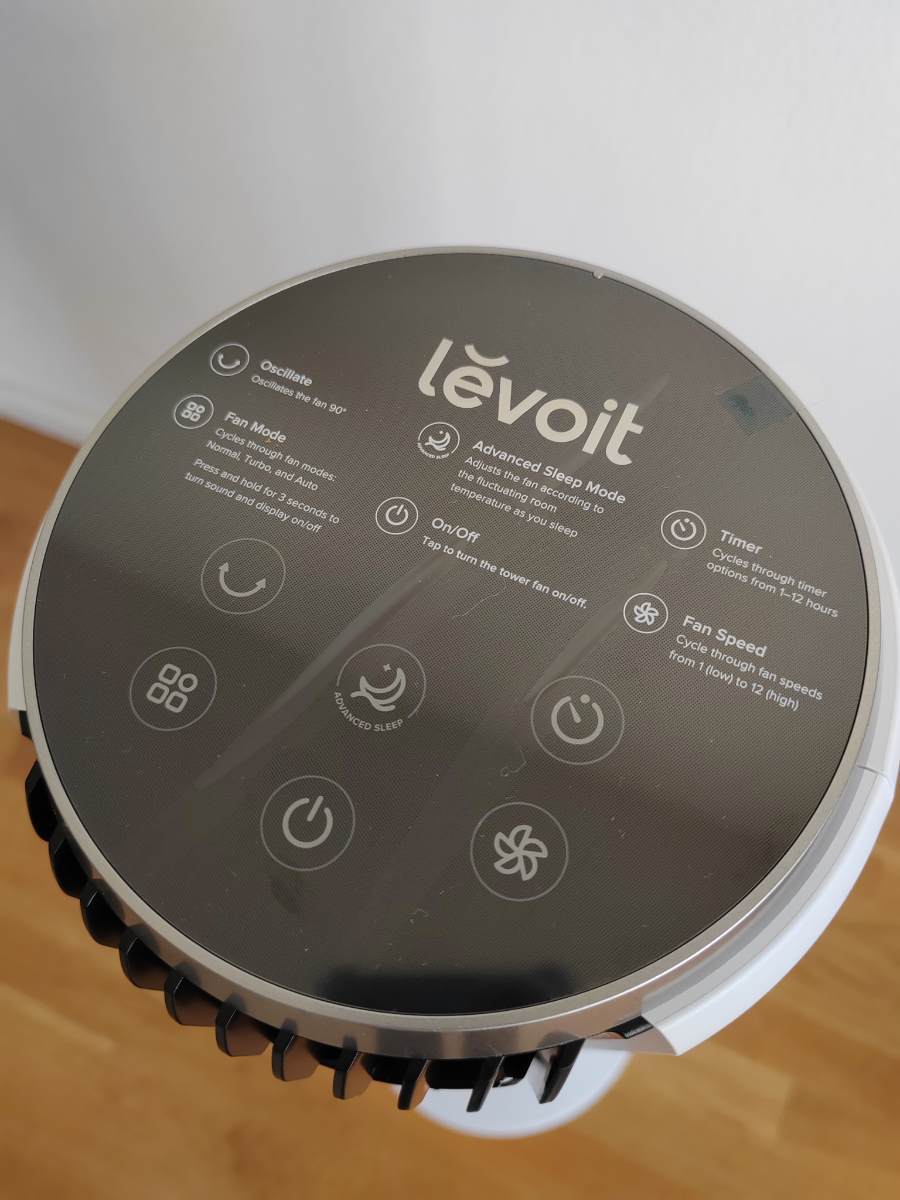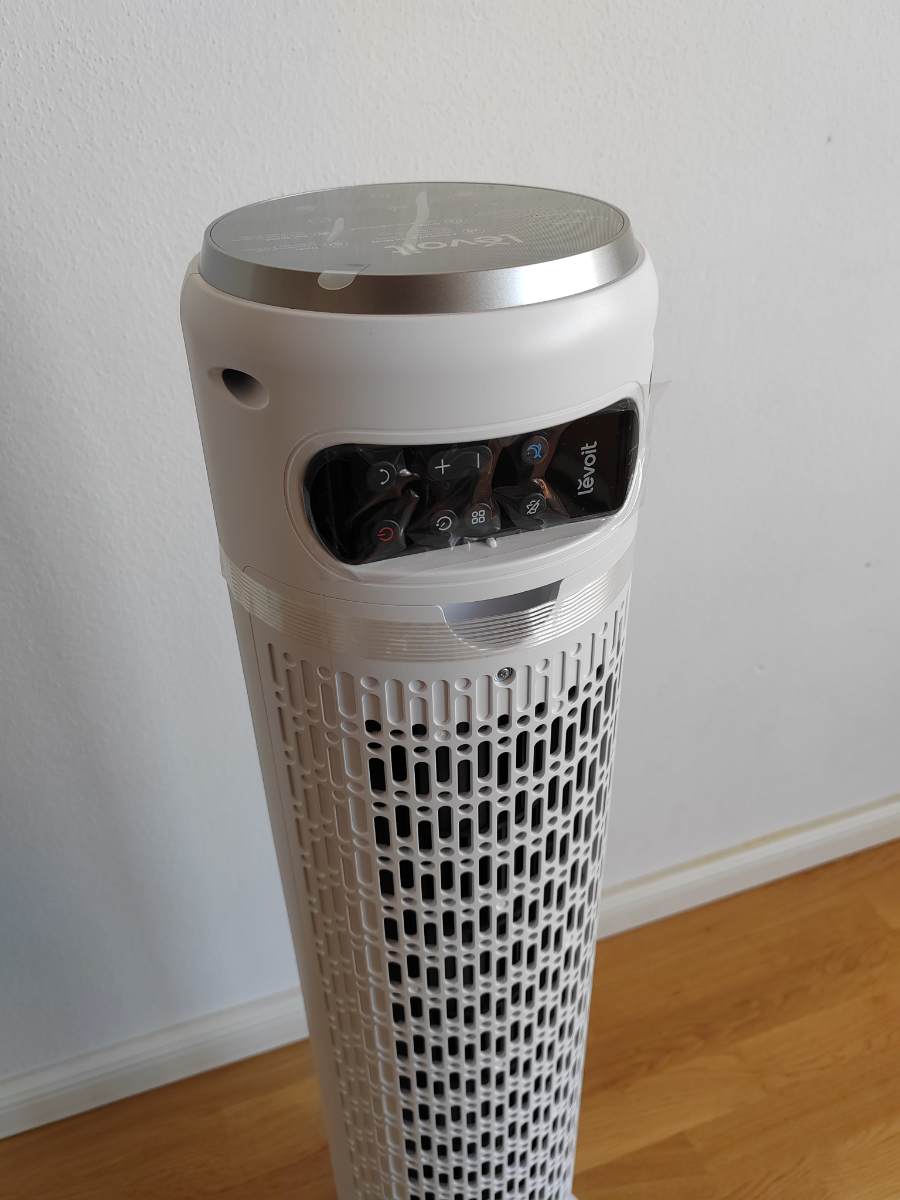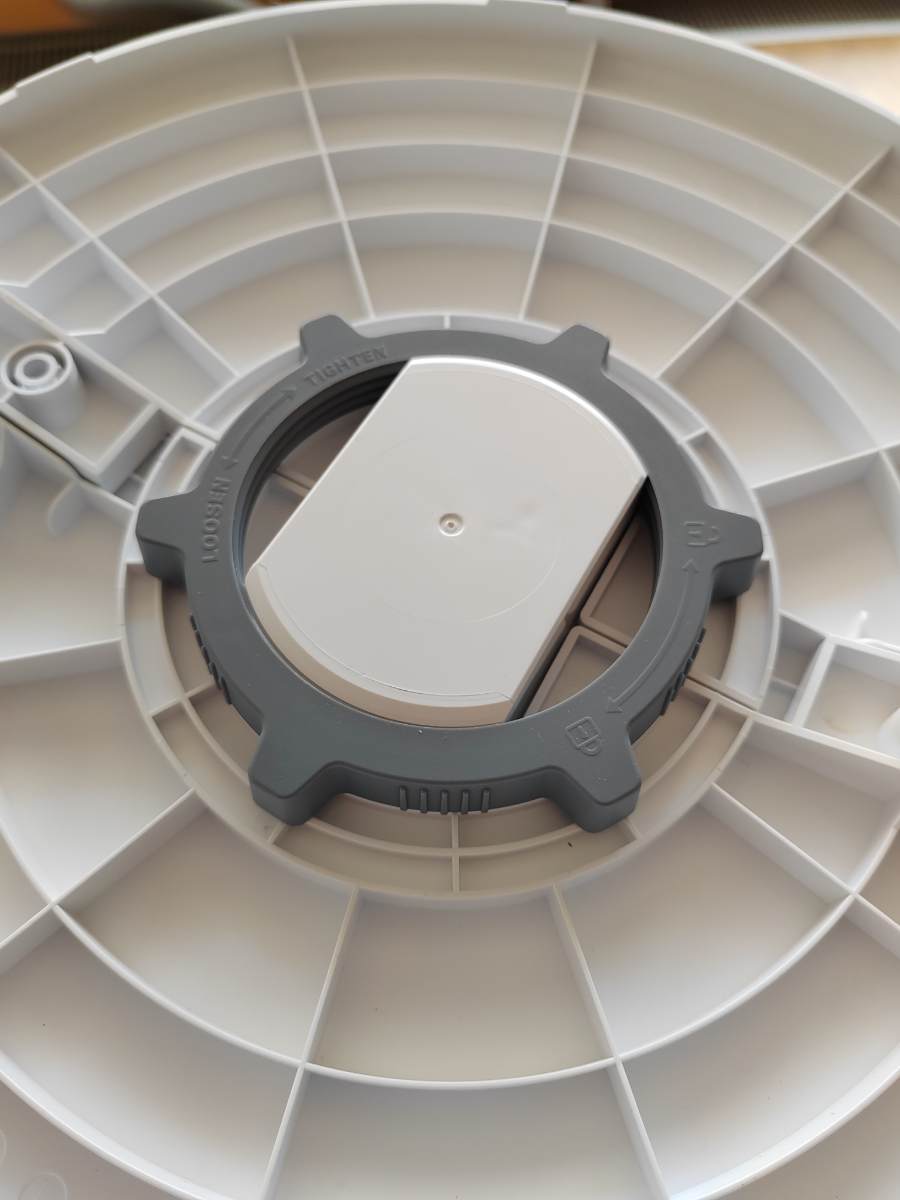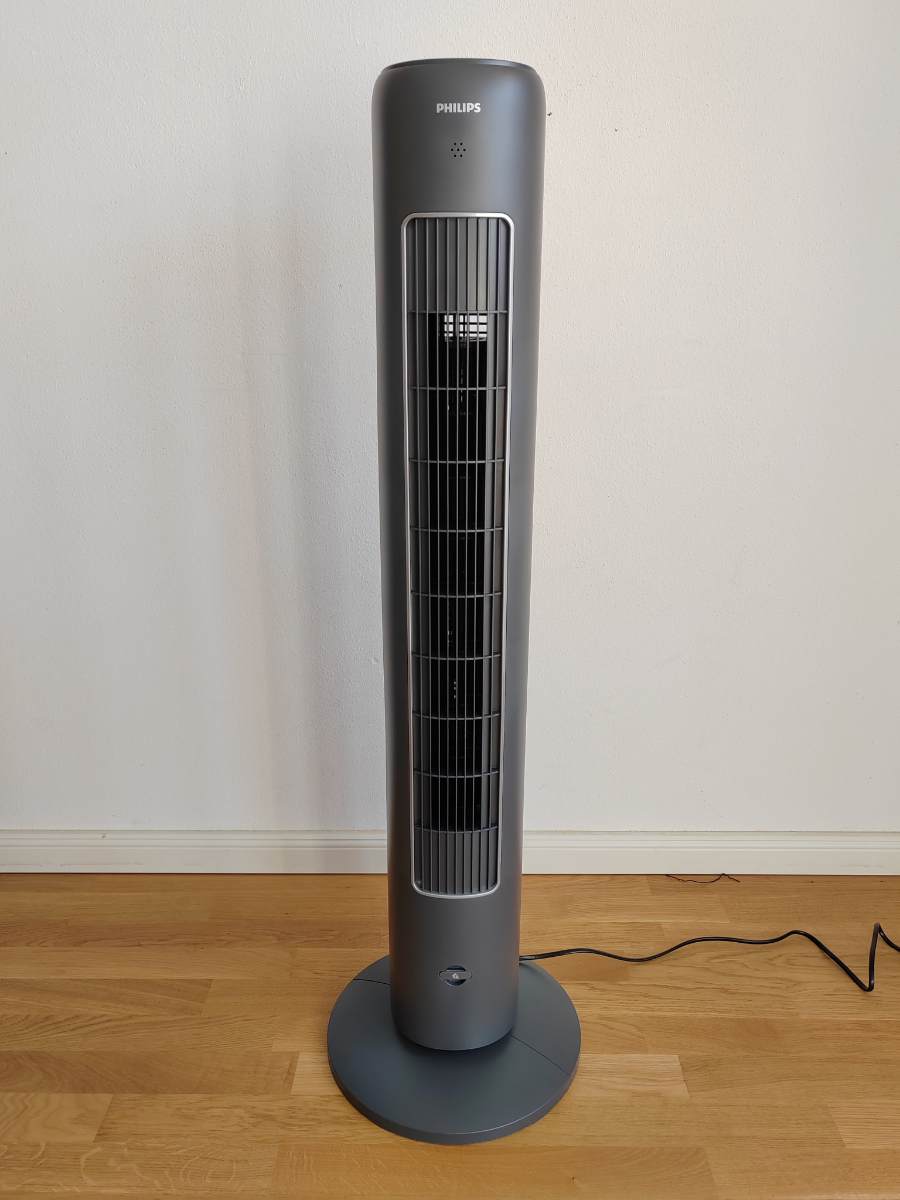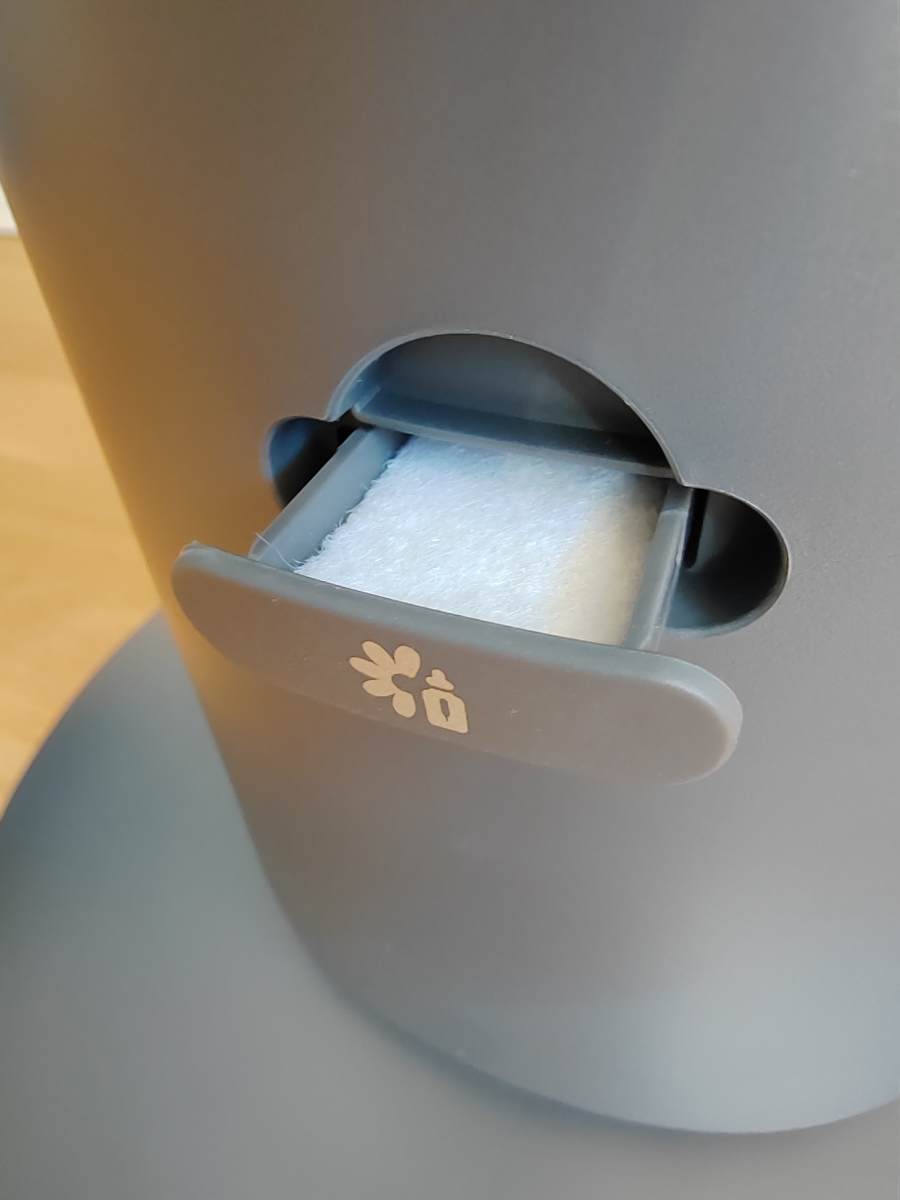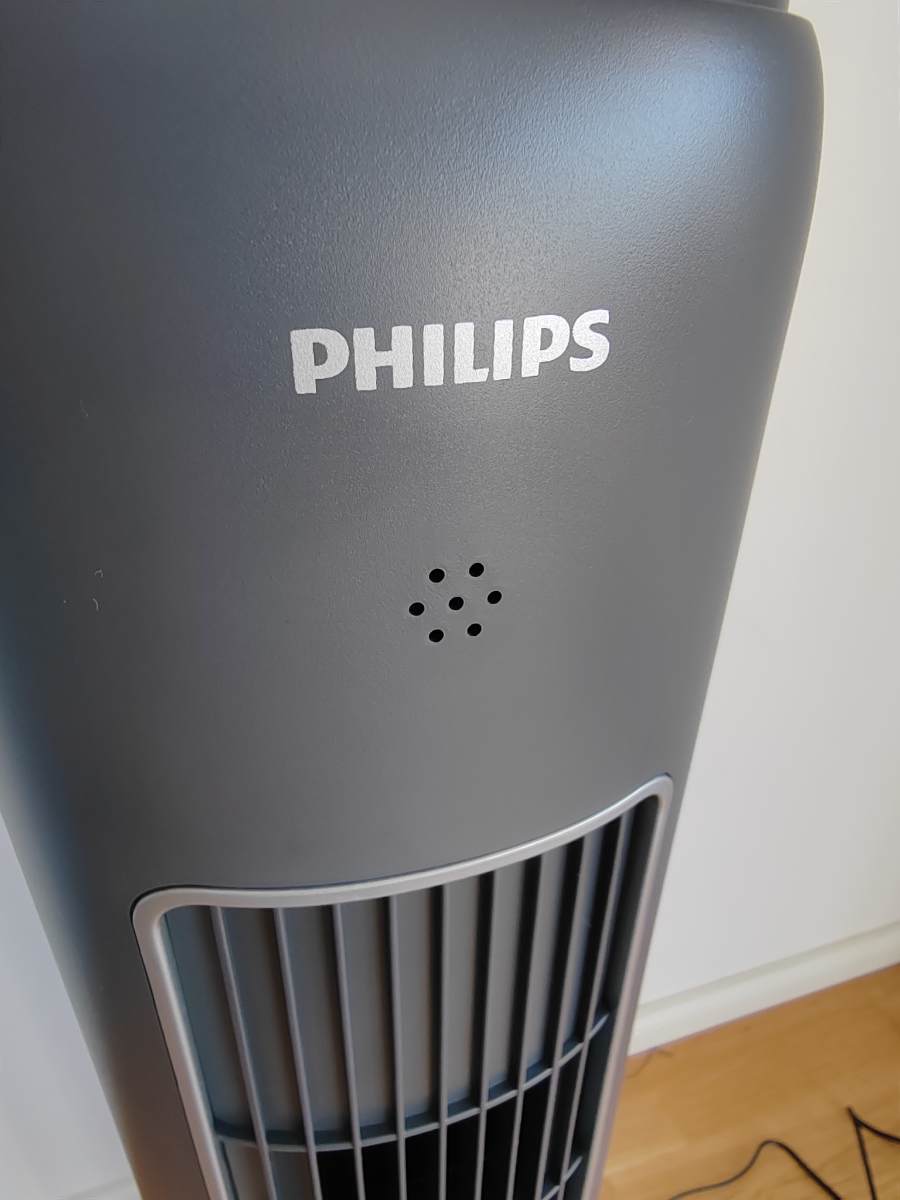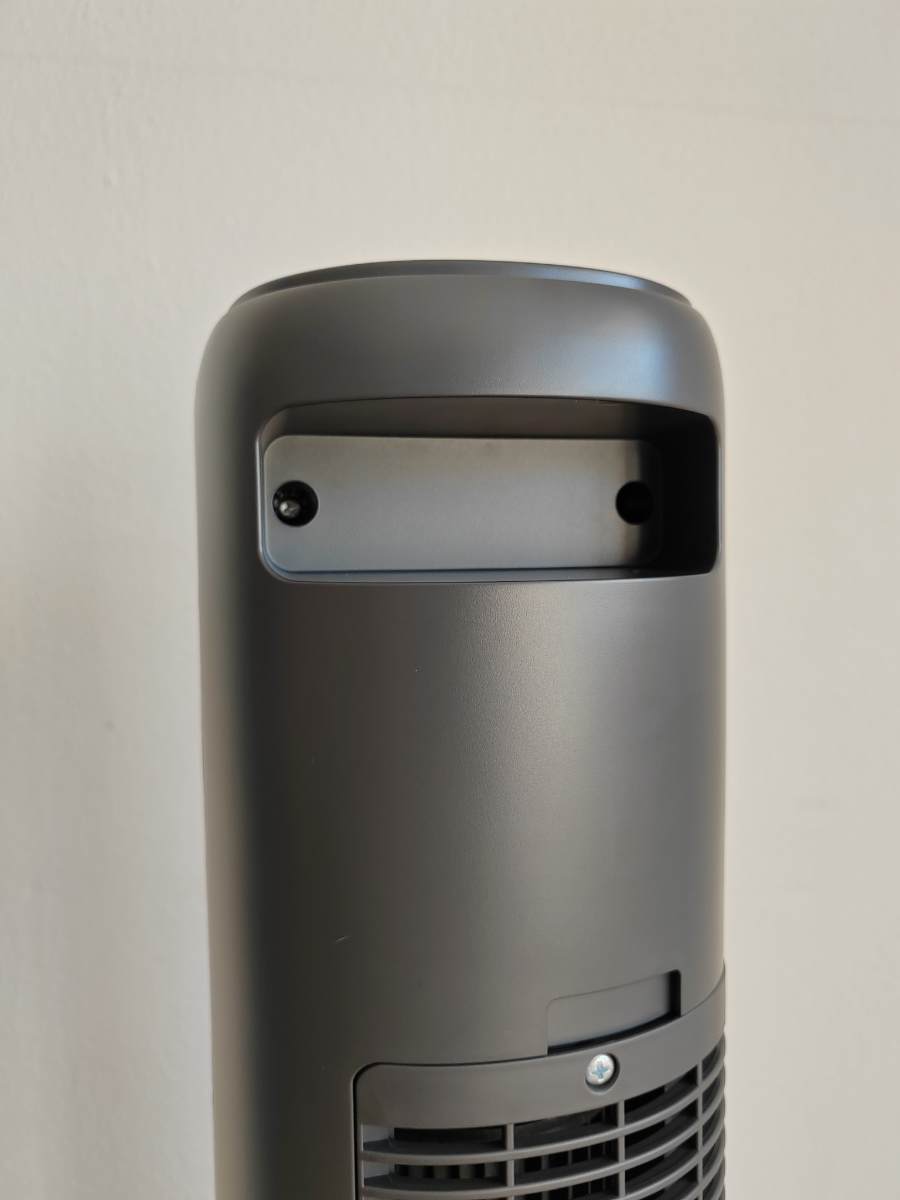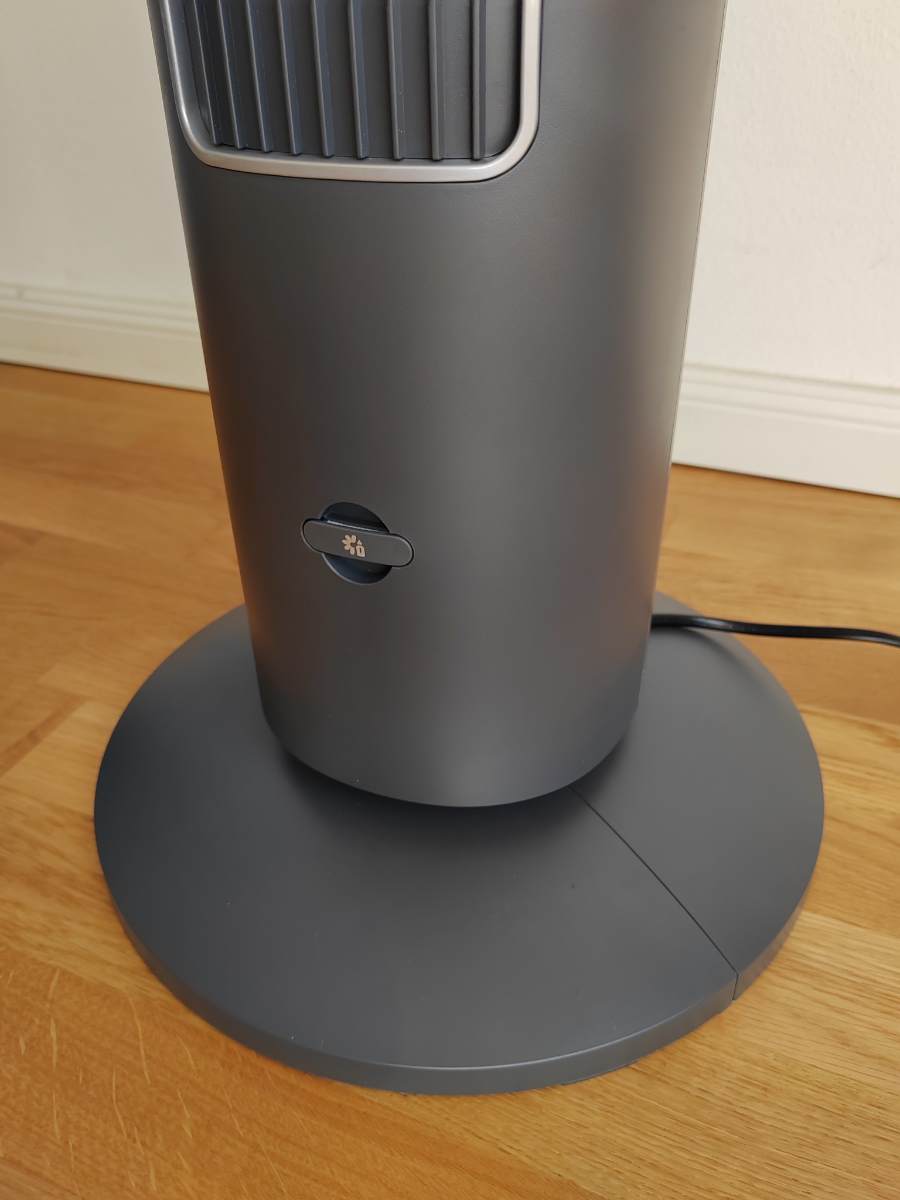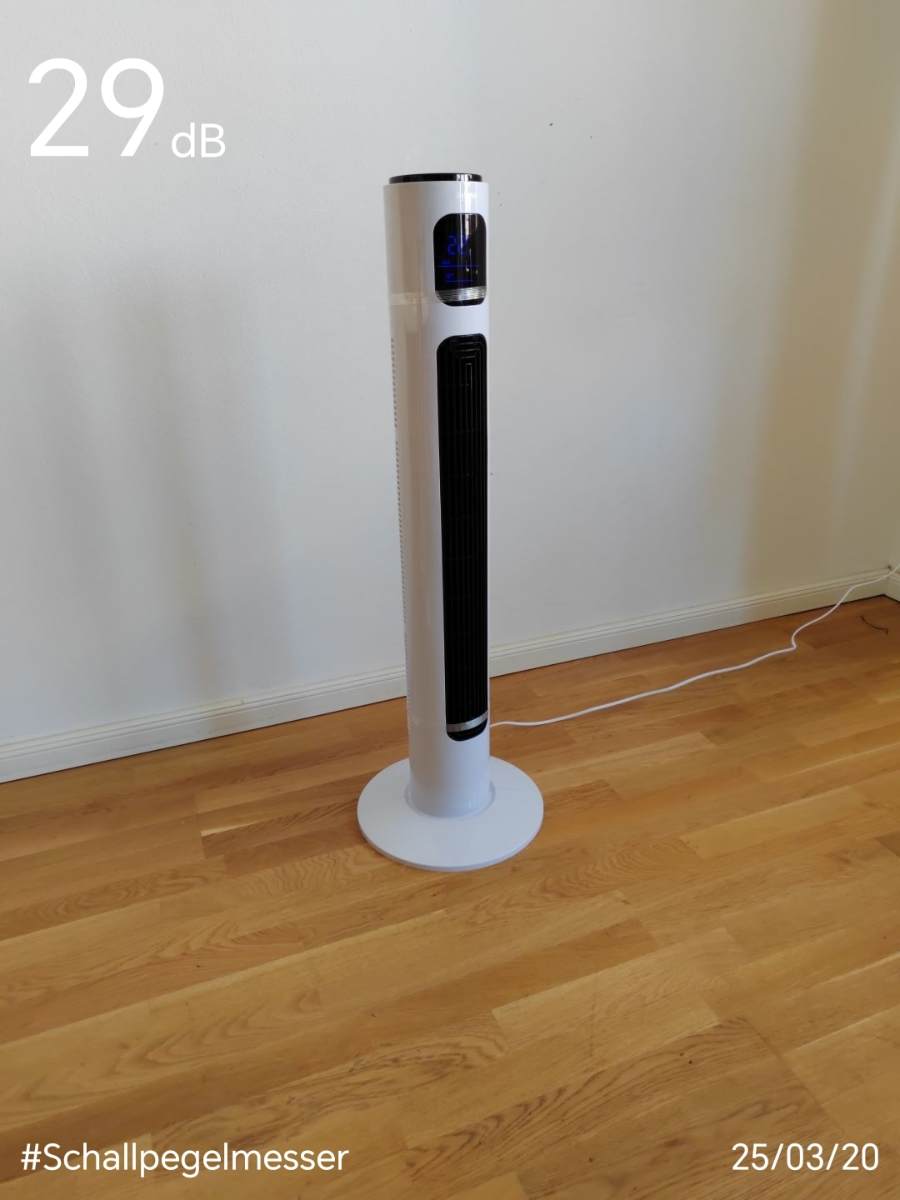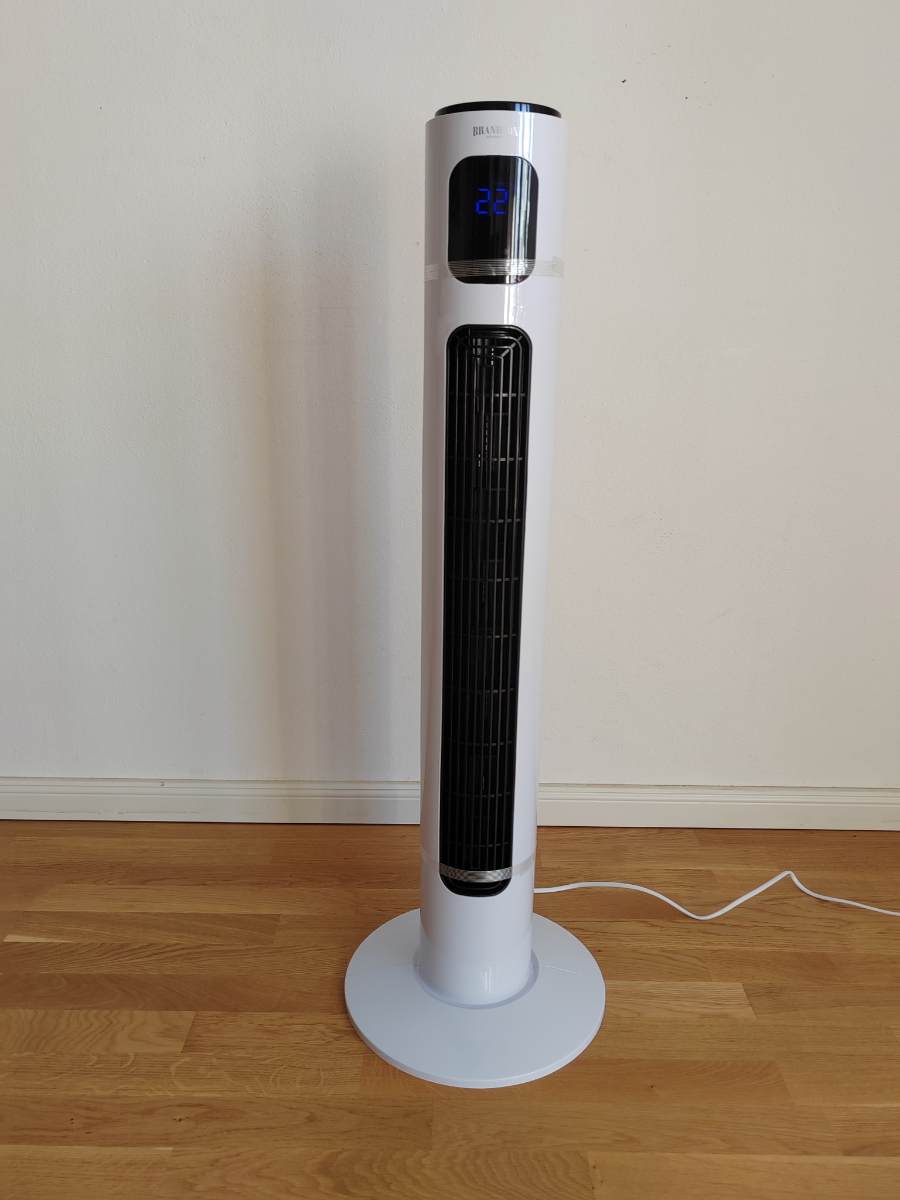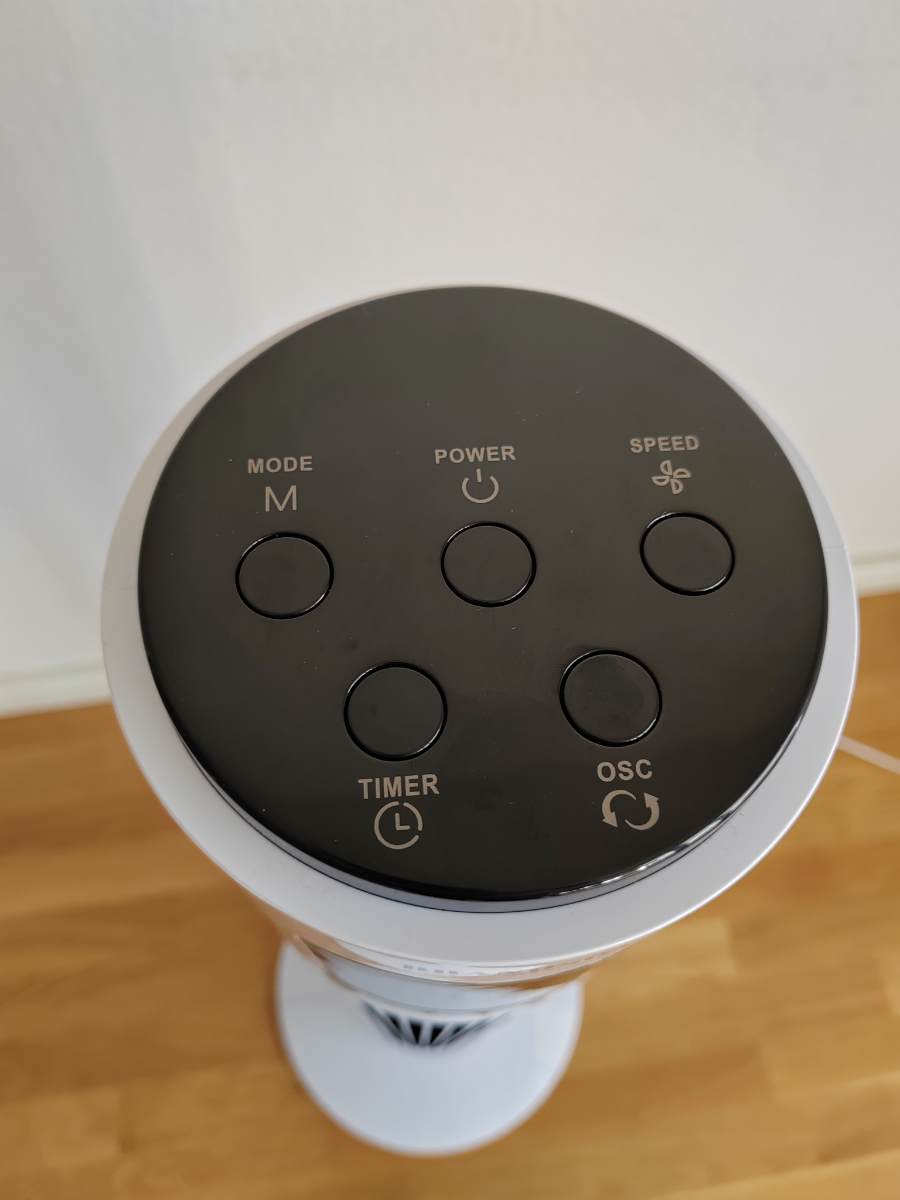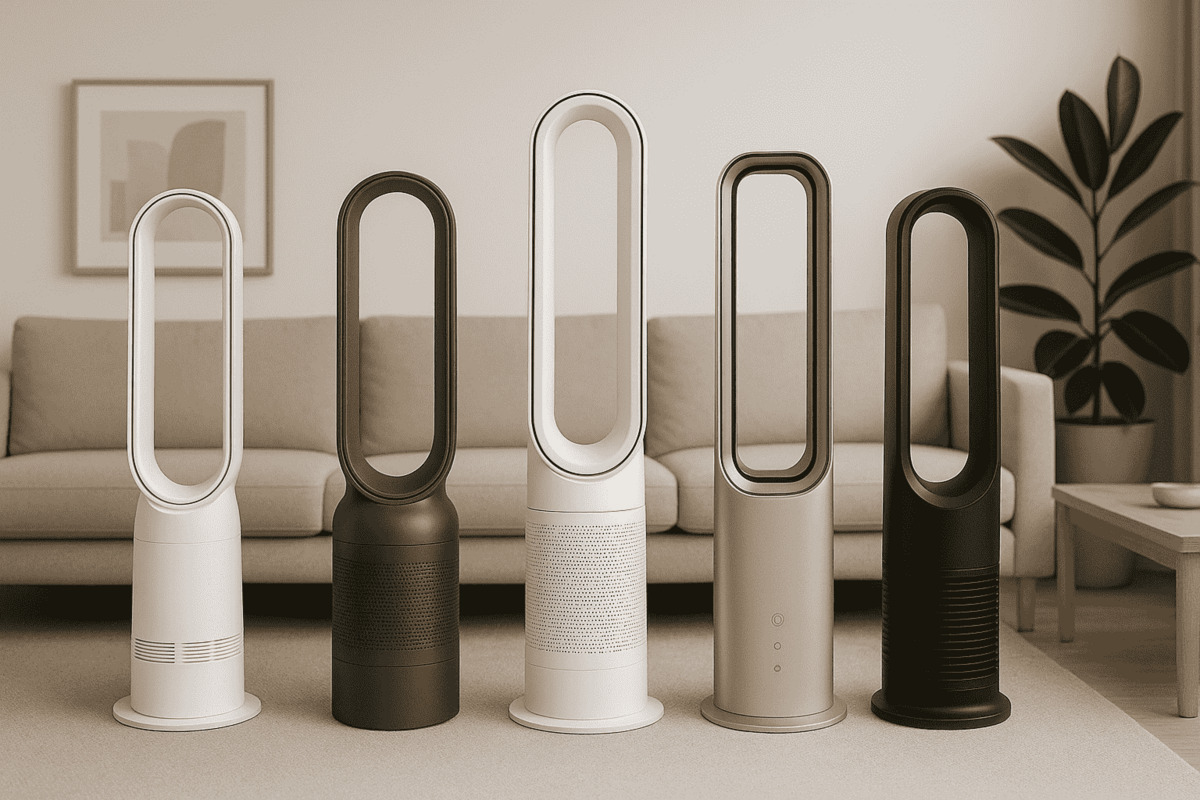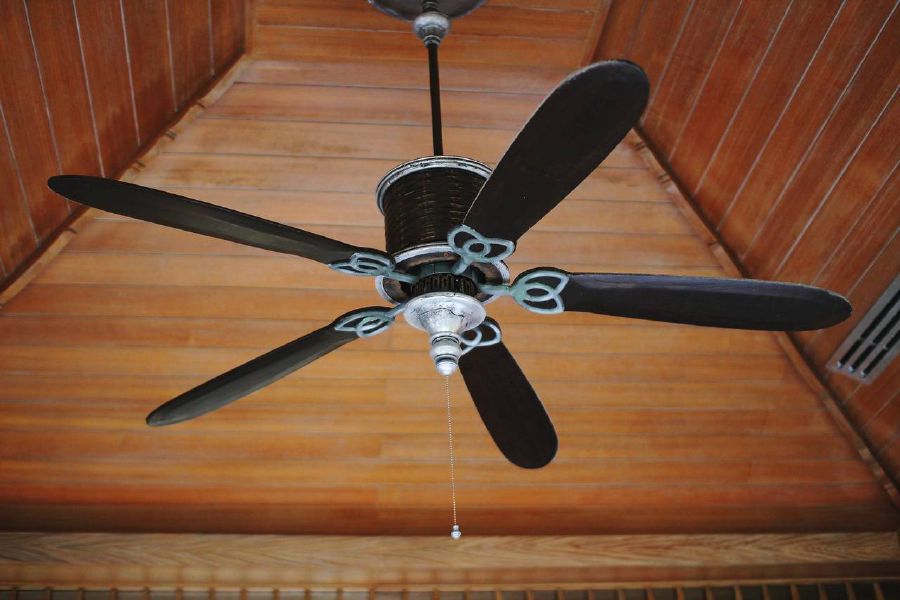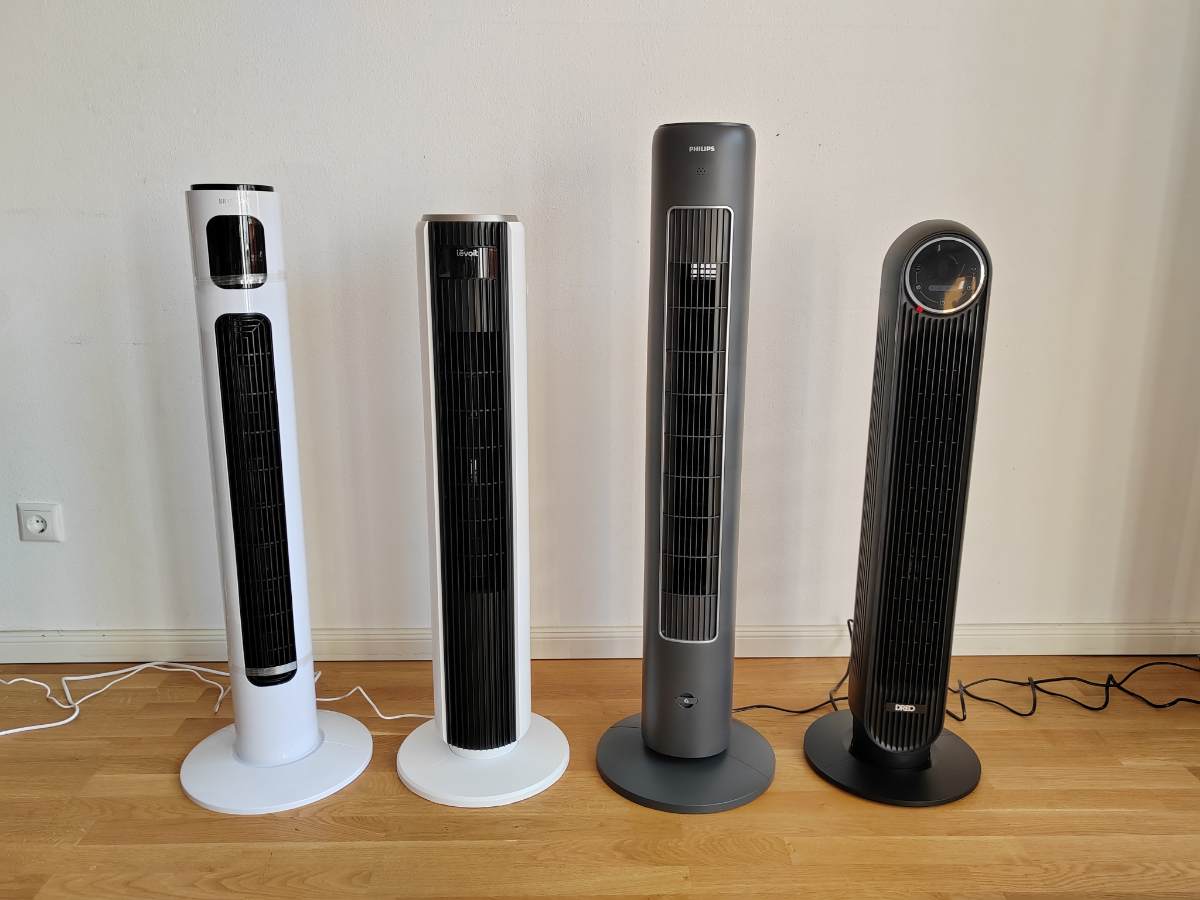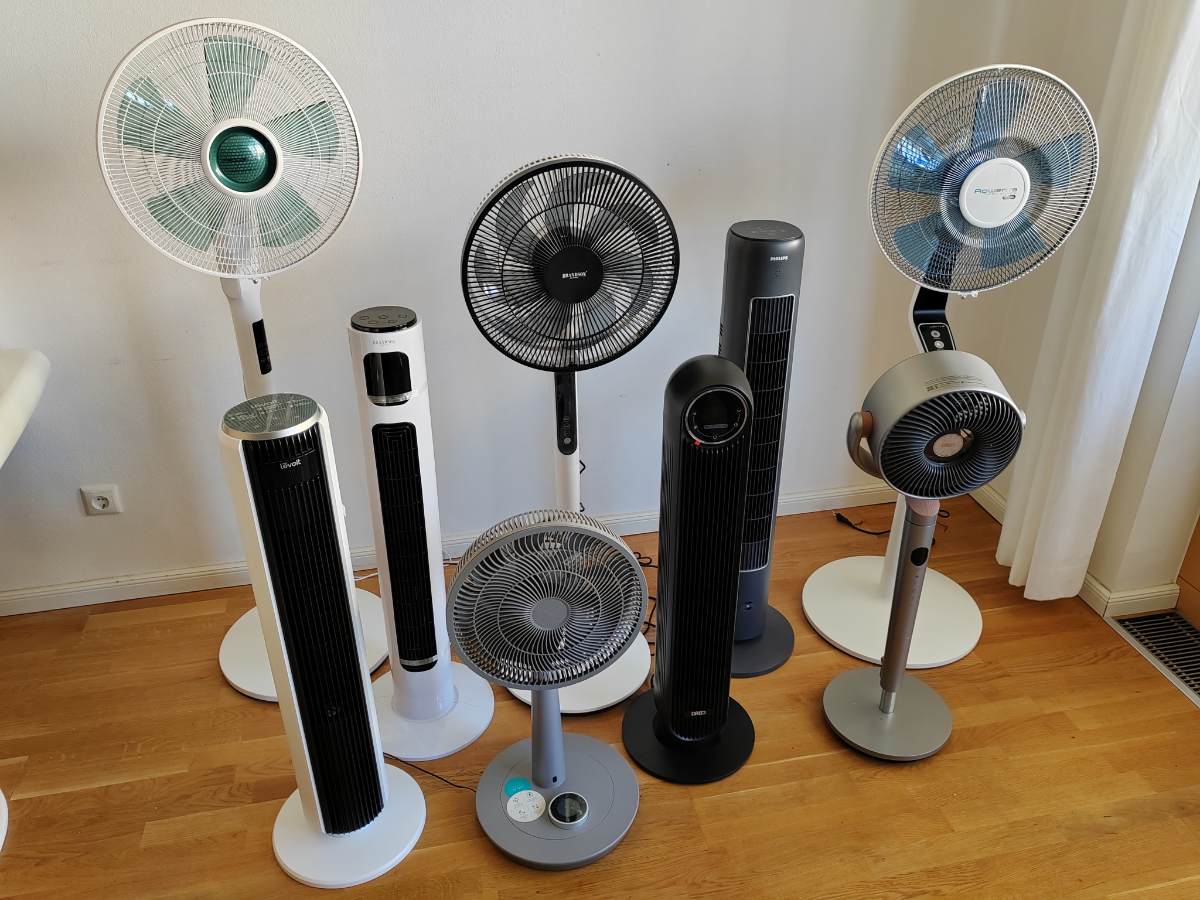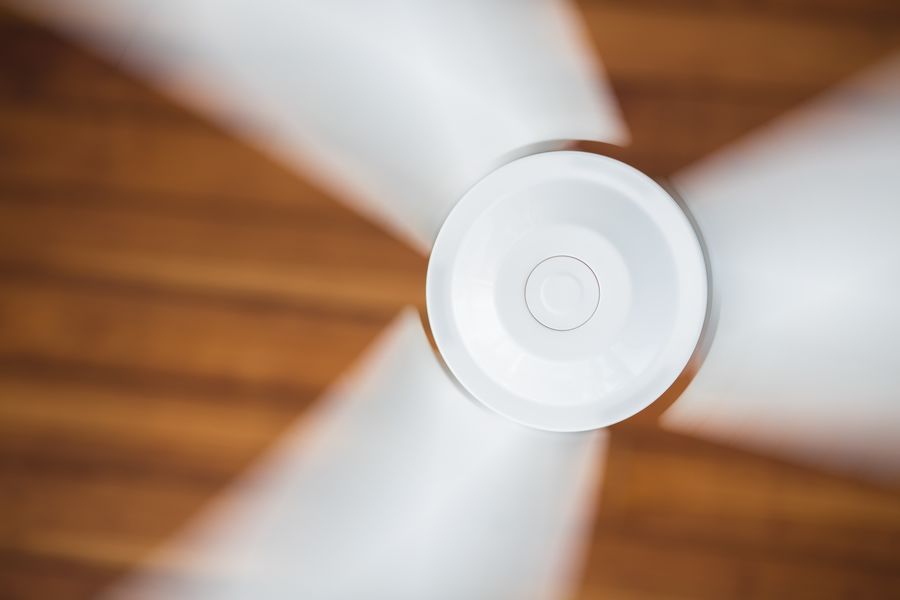The best fans in the test
The best fans in the test: Are you looking for a fan that is quiet, powerful and affordable? No problem! We'll show you the best models - from pedestal fans to tower fans - and help you find the right device for your needs.
Ideal for the bedroom, living room or office - included: Test winners, popular models and real value-for-money tips.
Fan test winner:
Recommended fans by category
Popular fans from the category - Quiet fans
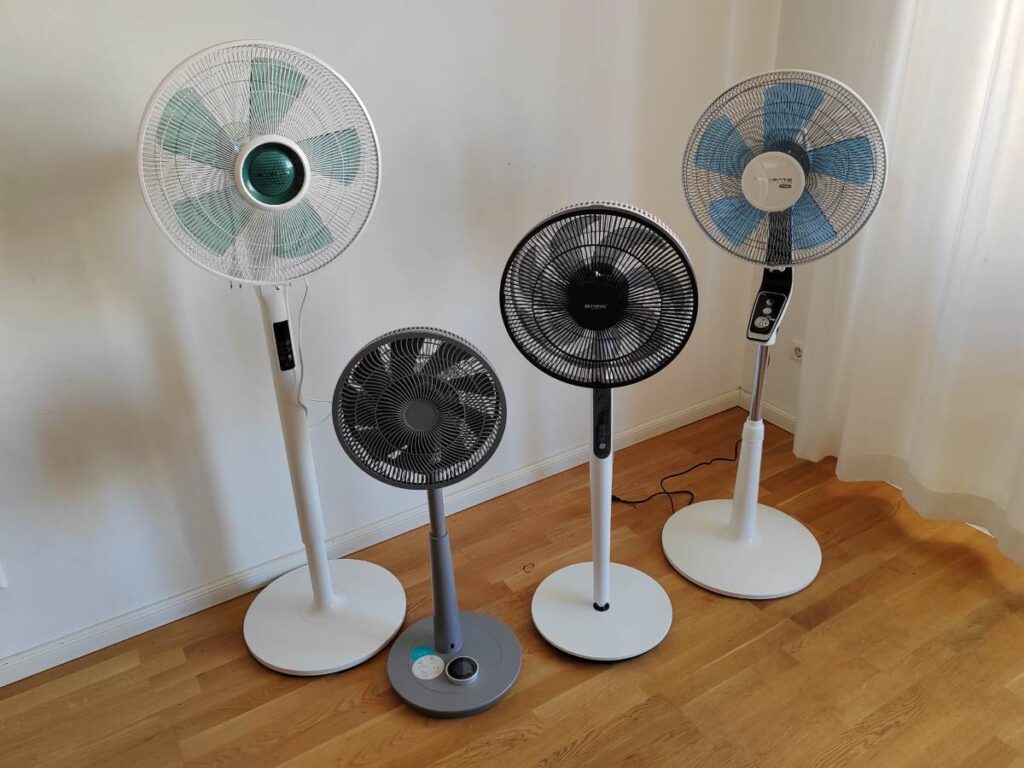
From our Pedestal fan comparison we have given you the 3 most convincing devices compiled.
You can find all further information about the test right here:
👉 Among the best Quiet fans in the test
Levoit 20dB Quiet Pedestal Fans - It couldn't be quieter
The Levoit pedestal fan impresses in our test with a perfect mix of smart control, quiet operationand strong airflowmaking it the top choice for Smart Home fans. Setup is a breeze – the fan is stable, modern-looking, and ready to go in just a few minutes.
Already on Level 1 (16dB) barely audible - almost imperceptible - and yet so powerful that from approx. 3 metres away caused a candle to flicker or go out has been installed. This creates a natural, pleasant air flow, ideal for quiet nights or concentrated work in the home office.
With a total of 12 speed levels, Timer function, vertical oscillation and one Tower Fans with Remote Control the Levoit offers everything you could wish for in a modern fan. From Level 4 increases the noise level slightlybut still remains surprisingly quiet compared to many other devices and at the highest level you have real power.
In our test, the Levoit pedestal fan was not only quieter than the Levoit tower in 2nd placebut also significantly quieter than the Rowenta (3rd place). The only small drawback: the the vertical oscillation range could be a bit wider. - A little more flexibility would be desirable here.
Simulating natural wind is often perceived as more pleasant than a constant flow of air over a long period of time.Our conclusion:
A real The quietest of fans - with functions that are otherwise only found in higher price ranges. A real insider tip for currently less than £130.
👉 Tip: Watch our videoWatch the video to see the Levoit in action. It's set to a high level here, so it's a bit louder than usual It couldn't be quieter - a snap of the fingers at the end as there is already a sound on here 😉
Rowenta Turbo Silence Extreme + - 23 dB with very large rotor blade
The Rowenta Turbo Silence Extreme+ scores in the test with the best workmanship and the highest quality design among all devices tested. The Stand is particularly stable and heavywhich ensures a secure grip - ideal for uneven floors. The large rotor with multiple blades not only looks impressive, but also delivers plenty of power. On Level 1 was measured at around 23 dBwhich makes him one of the quieter pedestal fans perfect for quiet environments. But those who Power searchshe gets on Level 16 supplied more than adequately - Here the Rowenta moves an extremely large amount of air.
Apart from its enormous power, the Rowenta product has nothing to hide:
- 16 levels
- Natural wind mode
- swivels 120 degrees
- Timer up to 12 hours
- Tower Fans with Remote Control
Exciting: In direct comparison to the Normal Rowenta Turbo Silence pedestal fan (see below in the test), the Extreme+ variant significantly quieter a real difference in everyday life, which is particularly noticeable in bedrooms. For those who value high-quality workmanship and is prepared to £149.00 to investgets an appliance that is visually and functionally impressive. A quiet, powerful fan for anyone who doesn't want to compromise on quality.
Dreo quiet pedestal fan - Strong design with good power
The Dreo PolyFan stands out in the test above all due to its Modern, almost futuristic design on. If you don't like classic pedestal fans, this is a stylish alternative with surprisingly solid performance.
With 8 speed levels and 3 modes (including natural wind simulation), it covers everything you need in everyday life - from gentle breezes to strong gusts. The Oscillates in both directions simultaneously (horizontal & vertical 120° each)which ensures pleasant all-round air circulation. Visually, it really does make quite an impression.
The Volume is very low, on Level 1 barely audible (approx. 25 dB) - Ideal for bedrooms or quiet rooms. Even at higher settings, the operating noise remains pleasant - compared to the Dreo tower fan (to follow in the ranking) Significantly quieter.
- 8 speed levels
- Natural wind mode
- Pivots horizontally and vertically 120° each
- Timer up to 8 hours
- Controllable with remote control
Assembly is quick and uncomplicated. The Tower Fans with Remote Control is practical and responds reliably. Bonus: If you own the small table fan from Dreo, you can control both with the same remote control.
One small drawback is the Only slight height adjustment (approx. 12.7 cm). This means that the PolyFan remains rather compact (approx. 89-101 cm) - which can be either ideal or a little too low, depending on where it is used. A temperature display is also missing, which might have been a plus given the price level.
Nevertheless, the overall package is convincing: Quiet, visually striking, well equipped. With Timer (up to 8 hours), uniform oscillation and energy-saving DC motor, the PolyFan is a well-rounded product.
Popular fans from the category - Rotorless fans

In our Test for rotorless fans three models stood out in particular.
If you would like to read the full comparison, you can find it here All details and purchase recommendations:
👉 Among the best Rotorless fans in the test
Ultty rotorless fan - Combi for better sleep
Anyone looking for a fan that can do more than just make wind should definitely take a look at the Ultty tower fan. It combines quiet cooling with an integrated HEPA air purifier - a concept that is particularly interesting for allergy sufferers, smokers or people in urban environments. I took a closer look at the appliance - and was pleasantly surprised.
Whisper-quiet breeze & high air quality
What is immediately impressive is the volume - or rather, how little you hear of it. Even on the medium setting, the appliance runs so quietly that you almost forget it's on. Ideal for bedrooms, offices or the baby's room. The night mode, in which the display also dims automatically, is particularly practical. This ensures undisturbed sleep and a pleasantly cool room climate - without annoying buzzing or brightly lit numbers.
The integrated HEPA13 filter also does a solid job. According to the manufacturer, it removes 99.97 % of all ultra-fine particles - and you can tell. Many users report noticeably better air, freer breathing and fewer allergy symptoms. The device cleans the air five times per hour in an area of up to 20 m² - which is ideal for smaller rooms or bedrooms.
Operation & comfort
Operation is simple and well thought out. The LED touchscreen responds precisely, alternatively the fan can be conveniently controlled by remote control - particularly practical from the bed or sofa. There are 3 operating modes (standard, natural wind, sleep mode) and 9 speed levels available. A timer (up to 8 hours), 90° oscillation and a 30° adjustable air outlet are also included - a lot has really been thought of.
The air circulation is pleasantly even, and the rotorless design means there are no annoying air vortices or loud rotor noises. And this is a very reassuring safety solution, especially for households with children or pets.
Weaknesses? Reductions in power at high level
Where the Ultty can easily be beaten is in its absolute air performance. Anyone expecting a gale-force breeze at the highest level will be disappointed. Although air is still moved at level 9, compared to classic tower fans without an air filter, it simply lacks a bit of pulling power. It also gets noticeably louder at the highest level - a classic problem with fan/air purifier combinations that have to work harder due to the filter.
But if you prefer it to be gentle, quiet and with added value, this is the right place for you.
Conclusion
The Ultty tower fan is not a wind maker for heat battles - but a stylish, well thought-out all-rounder for permanently better air and pleasant cooling in everyday life. Particularly recommended for sensitive sleepers, allergy sufferers or parents looking for a safe, quiet device. If you want maximum power, you should also buy a classic fan - but for everything else, the Ultty is a real recommendation.
djive ARC Casual 2-in-1 - Smart air purifier with style
The djive ARC Casual is one of those modern combination appliances that make you wonder: Why hasn't this been around for much longer? A tower fan with HEPA 14 air purifier and app control that runs as quiet as a whisper, looks good and fits into any living room? That's exactly what the djive has to offer - and in my everyday life it has proven to be a versatile companion.
Quiet & efficient - ideal for everyday use
With a noise level of just 29 dB, the djive ARC is one of the quietest devices in its class. It runs virtually unnoticed in the bedroom - even at night, which makes it particularly suitable for sleeping. At the same time, it ensures even air circulation, which is pleasantly gentle but noticeable. And thanks to the HEPA 14 filter, the room air is thoroughly cleaned - even the finest particles such as pollen or house dust are removed.
I was particularly impressed by the display of fine dust pollution (PM2.5). After airing the room or doing a match test, I was able to easily understand the reaction speed of the sensor. If you're a bit tech-savvy like me, you'll be delighted. One small detail: the filter display can drop somewhat prematurely to "0 %" - but the filter does not necessarily have to be replaced immediately, as one user has proven with simple tests.
App, Alexa, Google - it could hardly be smarter
The app is a real highlight. It is stable, easy to use and offers many automated functions - from schedules and air quality triggers to control via voice assistants such as Alexa or Google Home. This makes operation flexible, even when you're not at home. The humidity can also be viewed via the app, which can be particularly helpful in winter.
Good workmanship, minor weaknesses
The design is simple and modern - in "Clean White" it cuts a fine figure in any corner. Operating the appliance itself works reliably, even if the remote control is a little clunky. A little dexterity is required when inserting the filter, as it occasionally gets stuck here. The colour of the housing can flake off slightly at the edges over time - not visually tragic, but still a point.
One small drawback is that no settings are saved when the appliance is disconnected from the mains. This is a shame, especially if you change the device frequently. There is also no HomeKit integration - a minor drawback for Apple users.
Conclusion
The djive ARC Casual is a sophisticated, smart combination appliance for anyone who wants a good indoor climate - quiet, powerful and stylish. A clear recommendation for allergy sufferers, technology enthusiasts or simply comfort fans. The optional humidifier attachment is not a must - the basic appliance is already impressive across the board.
Rowenta rotorless 2 in1 air cleaning fan - Quiet, stylish, powerful
The Rowenta Eclipse QU5030 is a real all-rounder: rotorless fan, air purifier and - depending on the model - even with a heating function. I scrutinised the 2-in-1 model and was curious to see whether the combination of function and design would also be convincing in practice.
Design & workmanship - more than just an eye-catcher
The Rowenta Eclipse has a high-quality finish, a modern design and looks great - especially in modern living spaces. Operation is intuitive, both directly on the appliance and by remote control. Assembly is simple and the filters can be inserted in no time at all. A nice detail: the packaging uses very little plastic - a plus point in terms of sustainability.
Whispering operation with real effect
The fan is one thing above all: quiet. Barely audible in silent mode, it is a pleasant companion without annoying background noise, even at night. The air is distributed evenly and efficiently - up to 8 metres away according to the manufacturer. Ideal for medium-sized to large rooms. Thanks to 12 speed levels and two operating modes (night & auto), the intensity can be optimally adjusted. Particularly practical: in auto mode, the device regulates the power automatically based on the ambient temperature.
Another highlight is the integrated air purifier with two high-performance filters. These remove up to 99.95 % of all fine particles - perfect for allergy sufferers, pet owners or anyone who simply wants to enjoy better indoor air. User reports confirm noticeable improvements in the indoor climate and fewer allergy complaints.
Minor points of criticism? Yes, but not a dealbreaker
The remote control could be of a slightly higher quality for a device in this price range - but it is functionally flawless. The 2-in-1 model has no app control at all, which is somewhat surprising considering its otherwise smart appearance. In addition, the device is not exactly lightweight - anyone who wants to transport it frequently between floors should keep this in mind.
Conclusion
The Rowenta Eclipse QU5030 is a sophisticated, powerful appliance that not only cools but also cleans the air effectively. It is a real asset for people with allergies or sensitive sleep patterns. The design, range of functions and low noise level are just right - and justify the slightly higher price.
Popular fans from the category - Tower fans
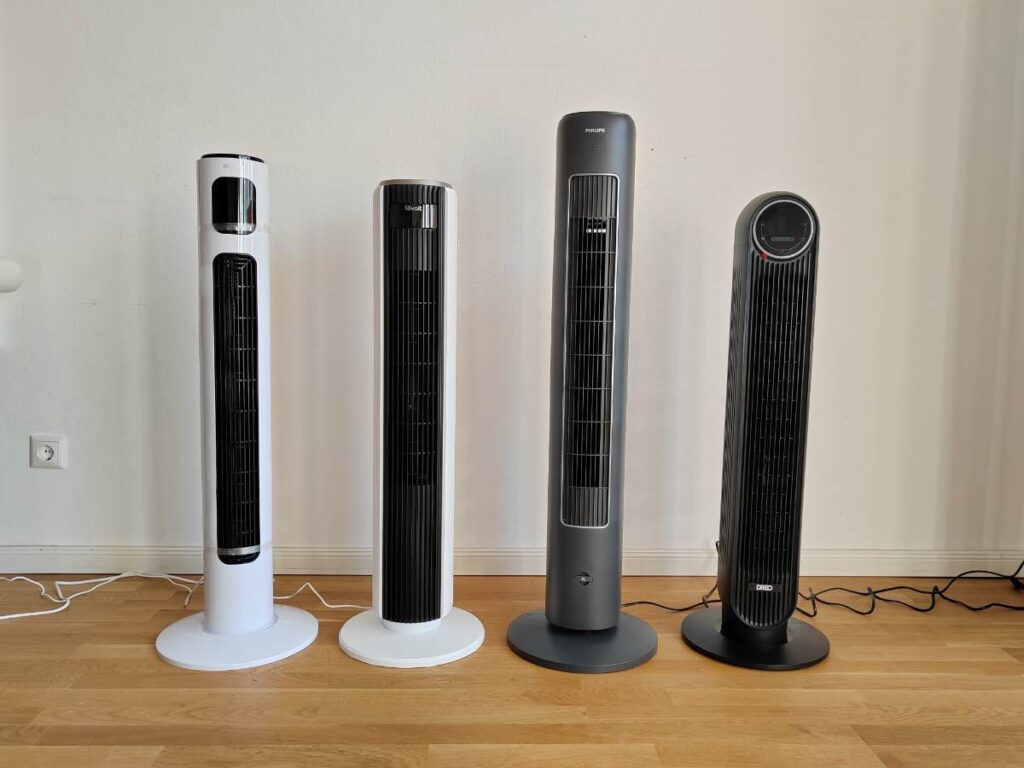
From our Tower fan test we have here the Top 3 models compiled.
If you would like to see the full comparison, you can find All information, reviews and recommendations on our overview page:
👉 Among the best Tower fans in the test
Levoit 21 dB Oscillating Tower Fan - Best Quiet Tower Fan for Bedrooms
The Levoit is a little louder in direct comparison to the Brandson pedestal fan: 21dB (although you can hardly hear it) at the lowest level - this is almost exactly the manufacturer's specification of 20 dB and is one of the quietest models on the market.
The Assembly was completed in less than three minutesand the The stand was the quickest and easiest to install compared to other devices. Particularly impressive: Although it runs so quietly, the Air flow at level 1 strong enough to blow out a candle from a distance of three metres - a rare value in this appliance category.
On Stage 12, the Levoit delivers an air velocity of up to 7.9 m/s - more than enough for a quick cool-down on hot days. Thanks to the 90° oscillation the air flow is distributed evenly throughout the room. The LED display with temperature display, Tower Fans with Remote Control, 12 speed levels, 4 modes and a 12-hour timer round off the overall package. The fan in plain white also cuts a fine figure visually.
Important to know: With most tower fans, the air flow can be Do not adjust verticallybut flows always straight ahead. With a price of around $71.99 the Levoit offers a Impressive overall package of smooth running, performance and ease of use - Perfect for all those who also want to don't want to do without a cool breeze, but appreciate absolute peace and quiet.
Philips Oscillating Tower Fan with Remote - Best for Living Rooms
The tower fan from Philips is a Solid, functional fanwhich is particularly characterised by its Size, air performance and quiet operation convinced. Compared to other models such as the Levoit, Brandson or Dreo, it falls short of the mark. larger and also offers more powerwithout getting loud.
The Wide air outlet According to the manufacturer, it provides an air flow of up to 2230 m³/h - You can tell: the room is ventilated noticeably quickly. Philips specifies a noise level of 39 dB (min) to 46 dB (max) to. In my test, the volume at level 1 was only approx. 26 dB. That is Very quietbut still perceptible - more of a gentle hiss. Immediately after switching on, there was a Short electronic buzzing audible, which disappeared after approx. 30 seconds. Possibly device-specific.
- 3 speed levels
- Nature mode with changing air intensity
- Oscillation approx. 60° horizontal
- Timer from 1 to 4 hours
- Remote control included (with limited range)
With 3 speed levels and 3 modes (including a natural mode with varying intensity), the device offers enough variety for everyday use. The natural mode in particular conveys a pleasantly changing feeling of ventilation - from a gentle breeze to a powerful airflow. The integrated Timer (1 to 4 hours) is also practical, especially for the bedroom.
A nice extra is the Flavour diffuserwhich can be filled with your own essential oils. If you like subtle fragrances, you can also create a relaxing atmosphere - even if this remains more of a bonus feature.
The Design is slim, simple and space-savingideal for living rooms with limited space. The workmanship is of high quality throughout and assembly is quick and easy.
Brandson Oscillating tower fan Budget-friendly option
The Brandson tower fan is one of the cheaper models in our test and offers an astonishing amount of features: 3 speed levels, 3 operating modes (including a natural mode with alternating air flow), Timer (1-12 h) and a Remote control with holder directly on the device.
The manufacturer specifies a volume of 38 dB at the lowest level on - we measured around 29 dB. This is quiet, but already audibleespecially in very quiet surroundings. For sensitive ears in the bedroom Not idealbut still within an acceptable range.
The Air distribution is well solved by the 96 cm heightand also the 60° oscillation ensures proper area coverage. The Stand is heavy and offers good hold. One small weak point: the Display is difficult to read in daylight.
Overall a Functional, affordable tower fanwhich is technically solid, but cannot quite keep up with the quieter top models when it comes to volume. Who wants a Small budget If you've got a lot of appliance for little money, it's worth paying a little more for quieter models.
Popular fans from the category - Ceiling fans
From our Ceiling fan test we have here the three best models compiled.
If you would like to take a closer look at the full test and comparison, you will find All information, reviews and recommendations on our overview page:
👉 Among the best Ceiling fans in the test
CREATE / WINDCALM ceiling fan with LED light and natural wood wings
The CREATE WINDCALM ceiling fan is particularly impressive thanks to its combination of modern design, Quiet operation and functional equipment. The strikingly beautiful natural wood blades create a stylish look, while the stainless steel motor housing may appear somewhat larger and chunkier, but can still be elegantly integrated into many room styles.
A clear highlight is the Extremely quiet DC motor. At the low speed levels (1-2), the fan operates almost silently and is therefore ideal for bedrooms. Slight wind noise is only audible from speed 3, but the motor itself remains pleasantly quiet. At higher speeds (5-6), the air flow increases significantly, which is particularly pleasant at the height of summer, but then becomes audible.
The integrated LED lighting with Three selectable colour temperatures (warm, neutral, cold) provides good brightness for medium-sized rooms, but is not dimmable. Some users felt that the plastic cover of the light was not quite as high quality as the rest of the device, but functionally it fulfils its purpose.
In addition to Six speed levels also a Practical timer (1 to 4 hours)ideal for falling asleep. One point of criticism here: when the timer expires, the lighting sometimes switches on automatically, which was perceived as annoying, especially at night.
Assembly is quick and easy for experienced craftsmen. The enclosed Radio remote control works reliably and intuitively, even without direct visual contact with the device.
In the Winter mode the fan effectively distributes the warm air from the ceiling back into the room - a practical addition to the heating period.
Conclusion: The CREATE WINDCALM ceiling fan is a high-quality, quiet and powerful model with many practical functions and an attractive appearance. Despite minor weaknesses in the timer function and the lamp cover, the overall package is impressive, especially for living rooms and bedrooms up to approx. 25 m². A fan worth recommending with a good price-performance ratio.
Ovlaim 165CM walnut wood ceiling fans with lights
The design in a wood look with black contrast is modern and looks like a real home accessory thanks to its simple elegance. The workmanship is solid and the materials appear robust and of high quality.
The assembly is the only point that demanded a little patience from me. Unfortunately, the instructions are not very clearly structured, and some of the pictures and explanations are more likely to cause frowns than aha moments. The radio receiver and the wiring for the LED lighting in particular required a bit of fiddling around. However, once you have mastered the first part and attached the fan to the ceiling, the big "aha" moment comes: the function is convincing across the board!
The DC motor is really whisper-quiet - at the lower settings it is barely audible, which makes it ideal for the bedroom. Even at higher levels, the operating noise remains pleasant. The air flow is easy to regulate, with even the first level providing plenty of freshness. With its six speed levels and the option of left and right rotation, it is also well suited for heat distribution in winter.
I was also impressed by the light: with 3 colour temperatures (3000K, 4500K, 6000K) and the dimming function, it is not only practical, but can also be adjusted to create the right atmosphere. The 2400 lumens make the room pleasantly bright without dazzling.
The highlight is of course the smart control via app - it works perfectly. Alternatively, the fan can also be controlled via the remote control, which is very practical in everyday life. However, the beeping with every input is a little annoying - this can be particularly annoying at night.
The bottom line: A high-quality, powerful and visually appealing ceiling fan with light that is suitable for bedrooms as well as living rooms or patios. Only the installation requires a little time and patience.
Cyclone 132 cm ceiling fan - the classic
The Westinghouse Cyclone 78370 is a classic among ceiling fans - and this is evident as soon as you unpack it. The brushed steel look has a high-quality appearance, the five reversible blades can be fitted in black or with a silver stripe - so it blends in well with your own room concept.
Assembly is generally easy, especially when working in pairs. The instructions are illustrated and easy to understand. There is the option of installing the fan with or without the enclosed extension pole - so it can also be used well with low ceilings (height approx. 23 cm without extension).
The motor is pleasantly quiet overall, although a slight humming or grinding noise can occur depending on the model. Quality control seems to vary somewhat here. In several field reports, there was talk of fine adjustments or replacement devices - which, however, leads to a perfect result after a little patience.
In operation, the fan is particularly impressive in winter mode: it efficiently distributes the warm air from the ceiling back into the room, which saves heating costs. Summer mode is solid, although not everyone finds the air circulation at the highest level strong enough. However, it generally performs well in medium-sized to large rooms (up to 36 square metres).
A clear plus: the ability to retrofit a remote control. This makes control convenient and, according to reviews, works very reliably. Only switching between summer and winter mode has to be done directly on the appliance - a minor drawback.
All in all, the Cyclone 78370 is a robust, visually appealing ceiling fan with quiet operation and a practical reverse function. Minor weaknesses in air performance or manufacturing quality may need to be taken into account - but overall it is a solid device with proven technology.
Which fan is the right one?
When choosing a suitable model for you, the following points should not be ignored:
- Performance of the device
- Range of functions
- Power consumption
- Volume
Let's take a look at these points in detail and clarify which properties suit which circumstances:
❓ Does a fan lower the room temperature?
No - a fan Does not lower the temperaturebut ensures through air circulation for a cooler impression of warmth. The advantages:
- More even heat distribution for heating
- Perceived cooler air due to a slight draught on hot days
- Better air exchange when ventilating - e.g. in the evening in summer
💡 Tip: Use the fan when ventilating to exchange the warm air more quickly. Only an air conditioning system can really cool you down.
Performance
The output is important in relation to the size of the room. A small Table fan usually looks a little lost in a large study. However, it can also have a relatively large effect on air circulation.
In an open-plan office, however, a different calibre is required. That or simply several fans. In this case Tower fans offer. In contrast to pedestal fans, they save a little space and generally look more attractive.
Several rotor blades are an indication of a stronger airflow. However, this is only true to a limited extent, as too many blades have a negative effect on the airflow.
Range of functions
Although it only When it comes to the movement of air, some models can boast plenty of technical features. The usual functions that most appliances should have are as follows:
- Adjustable intensity
- Automatically swivels back and forth
- Timer for switching on and off
In addition to these simple setting options, models are also available that can be controlled via an app. This may not seem very useful at first glance, but as with heating, careful or Automatic timing be quite practical. In these respects, I would do without specimens that have their Own app have. It is better to use devices that can be integrated into existing and widespread SmartHome systems (e.g. Google Home, Alexa or HomeKit).
This means you are not tied to an app and can use the fan in conjunction with other SmartHome devices. It's also a hassle to take out your smartphone every time you want to operate the fan. The virtual assistants, which are commanded by voice, are better suited to this.
Power consumption
For appliances that run continuously or at least often and for long periods, it is worth keeping an eye on consumption. This also applies to fans, especially if they are models that heat or cool the air.
An important indicator for energy consumption labelling. Appliances are labelled with one of A+++ until D graded, whereby A+++ is the best possible grading. The order of efficient to less efficient is as follows:
- A+++
- A++
- A+
- A
- B
- C
- D
The rating does not directly indicate consumption, but rather the efficiency of the appliance. After all, an oven consumes more than a light bulb. Nevertheless, both can be rated using this system. The appliances are divided into classes according to their size and graded depending on their size class [ 1 ] . In short: with a glance at this clever scale you can recognise whether it is an efficient one or not.
Calculate consumption
If appliances are constantly running, it is often worth calculating the exact consumption. To do this, search for the energy consumption in watts in the product description.
Let's assume you have a fan in front of you that consumes 10 watts. And let's also assume that it is in an office and therefore runs for eight hours a day. You get the watt hours by multiplying 10 watts by 8 hours and then by 365 days. The result is 29,200 watt hours (29.2 KW/h).
At 30 cents per kilowatt hour, operating the fan therefore costs €8.76 per year.
The electricity cost calculator will tell you exactly what the energy costs will be for your individual use:
Cost per hour: 0.00 €
Cost per day: 0.00 €
Costs per month: 0.00 €
Costs per year: 0.00 €
Volume
Appliances in the home and indoors in general should As quiet as possible be. Loud noise sources are a distraction when working, relaxing or sleeping.
When looking for quiet fans, pay attention to the size of the appliance. Small models with rather short rotor diameters are usually louder. Table and ceiling fans are a good example of this:
A relatively small table fan turns quickly and the rotor blades whizzing through the air make a rushing noise. In contrast, a large ceiling fan rotates slowly and leisurely. It does not necessarily move less air; its larger rotor blades scoop up more air with each rotation.
Sources
[1] ↑ https://www.umweltbundesamt.de/themen/klima-energie/energiesparen/energieverbrauchskennzeichnung
